Heritage Sites in Uttar Pradesh
Dive deep into Indian architectural heritage with 22 comprehensively documented sites located in uttar pradesh. These heritage sites showcase remarkable craftsmanship, innovative construction techniques, and profound historical significance. Our digital archive provides researchers, students, and enthusiasts with detailed architectural documentation, historical research, and preservation insights.
22 sites with scholarly documentation
4 sites with 3D scans for architectural study
Floor plans and structural documentation
82% average documentation completeness
Total Sites:22
UNESCO Sites:2
ASI Protected:12
3D Scanned:4
Virtual Tours:3
Top Category:Temple (10)
22
Total Sites
2
UNESCO Sites
12
ASI Protected
4
3D Scanned
3
Virtual Tours
22
Featured
22 Sites Found
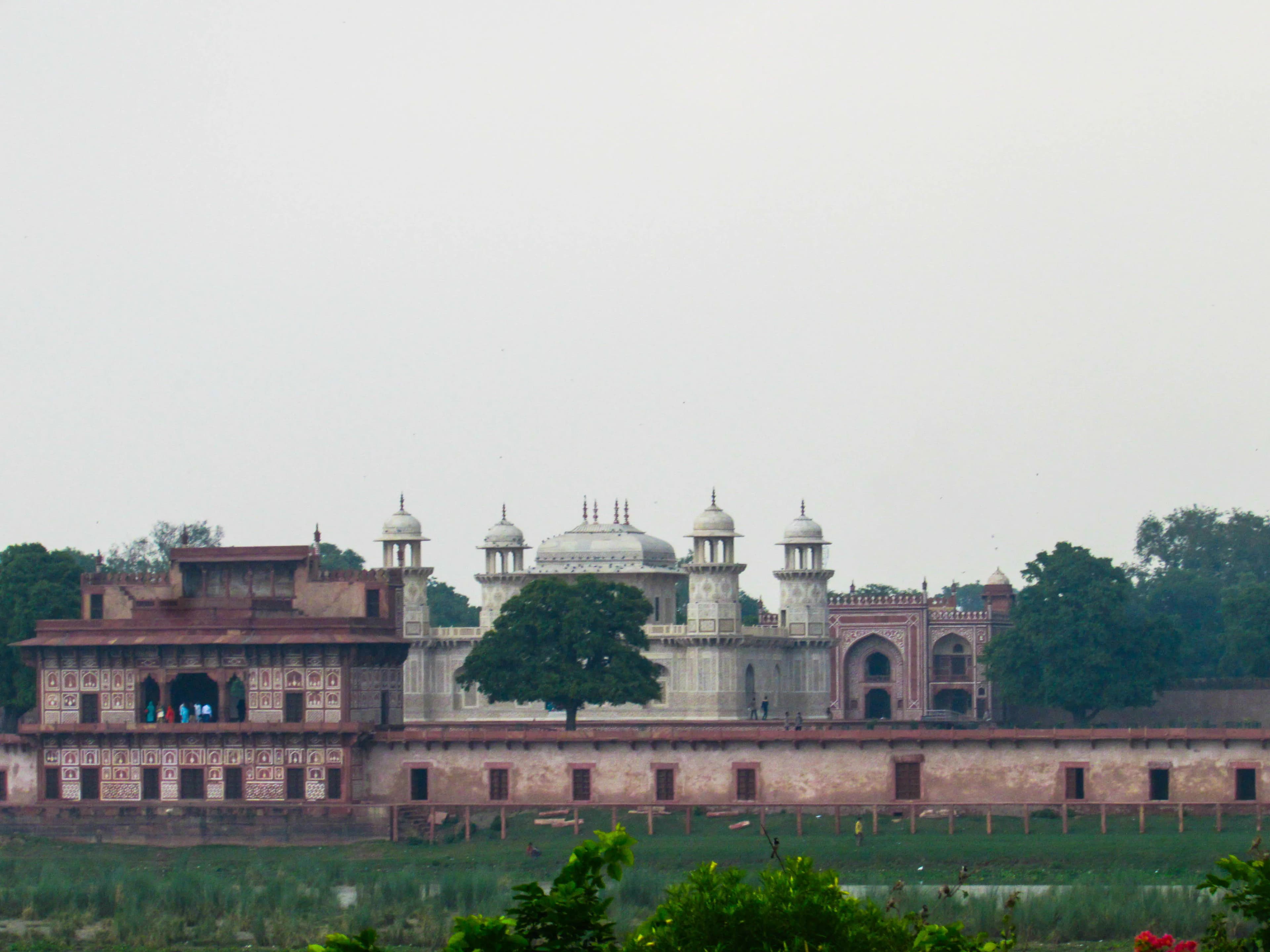
UNESCO
Featured
80% Documented
Rakabganj, Agra, Agra (282003), Uttar Pradesh, India, Uttar Pradesh
The imposing sandstone ramparts of Agra Fort rose before me, shimmering under the Uttar Pradesh sun, a testament to Mughal grandeur and a stark contrast to the bustling chaos just beyond its walls. Having documented countless architectural wonders across Gujarat, I was eager to experience this UNESCO World Heritage Site, a jewel in India’s historical crown. Stepping through the Amar Singh Gate, the primary entrance, I was immediately struck by the sheer scale of the fort. It wasn't just a fortress; it was a city within a city, a microcosm of the Mughal empire at its zenith. The architecture within the fort is a fascinating blend of Hindu and Islamic styles, a reflection of the Mughal emperors' evolving aesthetic sensibilities. The use of red sandstone, so characteristic of Mughal architecture, lends the fort a warm, earthy hue, while intricate marble inlay work adds a touch of delicate elegance. I was particularly captivated by the Diwan-i-Am, the Hall of Public Audience. The vast courtyard, once filled with courtiers and petitioners, now echoed with the whispers of history. The emperor's elevated throne platform, backed by intricately carved pillars and arches, spoke volumes of the power and authority wielded within these walls. Moving deeper into the fort, I entered the Diwan-i-Khas, the Hall of Private Audience. Here, the opulence reached its peak. The exquisite inlay work, featuring precious stones and intricate floral patterns, was breathtaking. I ran my hand lightly over the cool, smooth marble, imagining the Mughal emperors holding court amidst such splendor. The pillars, once adorned with silver and gold, now stand bare, yet their inherent beauty remains undiminished. From the Jahangiri Mahal, the palace of Emperor Akbar’s wife, I could see the glimmering white marble of the Taj Mahal in the distance, a poignant reminder of Shah Jahan's love for Mumtaz Mahal. The architecture of the Jahangiri Mahal, with its broad courtyards and intricately carved jharokhas (overhanging enclosed balconies), showcased a more traditional Hindu influence compared to the later structures within the fort. This subtle shift in architectural style offered a glimpse into the evolving cultural landscape of the Mughal empire. The Khas Mahal, Shah Jahan's private palace, was another highlight. The delicate marble screens, known as jalis, allowed for filtered light and ventilation while maintaining privacy. Standing within these chambers, I could almost feel the presence of the emperor, gazing out at the Yamuna River flowing below. The Musamman Burj, an octagonal tower where Shah Jahan spent his final years imprisoned by his son Aurangzeb, offered a somber contrast to the surrounding opulence. The view of the Taj Mahal from this tower, though breathtaking, was tinged with a sense of melancholy, a reminder of the emperor's tragic fate. The Anguri Bagh, a charbagh-style garden, provided a welcome respite from the grandeur of the palaces. The symmetrical layout, with its intersecting water channels and lush greenery, offered a tranquil oasis within the fort's walls. I sat by the fountain, listening to the gentle murmur of the water, and reflected on the centuries of history that had unfolded within this magnificent complex. As I exited the Agra Fort, the late afternoon sun casting long shadows across the ramparts, I felt a profound sense of awe. The fort wasn't just a collection of buildings; it was a living testament to the Mughal dynasty's artistic and architectural prowess. It was a place where history whispered from every corner, a place where the grandeur of the past met the vibrancy of the present. From the intricate inlay work to the imposing sandstone walls, every detail spoke of a bygone era, leaving an indelible impression on this traveler from Gujarat.
Fort
Rajput Period

Featured
80% Documented
Fort Road, Prayagraj, Prayagraj (211001), Uttar Pradesh, India, Uttar Pradesh
The imposing sandstone ramparts of Allahabad Fort, rising from the confluence of the Ganga and Yamuna, exude an aura of timeless power. Standing at the cusp of this historic site, I felt the weight of centuries pressing down, a palpable sense of the empires that have risen and fallen within these walls. My lens, accustomed to the intricate carvings of Khajuraho and the majestic stupas of Sanchi, found a new, stark beauty in the fort's robust, almost brutal architecture. Built by the Mughal emperor Akbar in 1583, the fort displays a fascinating blend of military pragmatism and artistic flair. The sheer scale of the structure is breathtaking. Walking along the ramparts, I could trace the strategic brilliance of its design, the placement of bastions and watchtowers offering a commanding view of the surrounding plains and the sacred confluence. The walls, though weathered by time and the elements, retain a sense of impregnability, a testament to the engineering prowess of the Mughal era. Within the fort’s confines, a different world unfolds. The Akshayavat, an ancient fig tree revered as immortal, stands as a silent witness to the fort's history. While photography isn't permitted within the tree's enclosure, the palpable sense of reverence surrounding it was a powerful experience in itself. Local legends whisper of its significance in Hindu mythology, adding another layer to the fort's rich tapestry of stories. The architecture within the fort displays a distinct shift in style compared to the outer fortifications. The delicate carvings on the Zenana, the women's quarters, offer a glimpse into the more refined aspects of Mughal life. Intricate jaali work, allowing for ventilation while maintaining privacy, showcases the artisans' skill. The contrast between the rough-hewn exterior and the ornate interiors is striking, reflecting the dual nature of the fort – a military stronghold and a royal residence. One of the most captivating structures within the fort is the Ashoka Pillar. Its smooth, polished surface, inscribed with edicts of Emperor Ashoka, stands in stark contrast to the rough texture of the surrounding sandstone. Running my hand over the cool, ancient script, I felt a direct connection to a period centuries before the Mughals, a reminder of the layers of history embedded within this site. The pillar, predating the fort itself, serves as a powerful symbol of the continuity of Indian civilization. My photographic journey through the fort led me to the Patalpuri Temple, an underground shrine believed to be one of the oldest in Prayagraj. Descending into the dimly lit sanctum, I felt a sense of awe and mystery. The architecture here is simpler, more ancient, a stark departure from the Mughal grandeur above. The play of light and shadow added to the temple's mystique, creating an atmosphere conducive to contemplation and reflection. Documenting Allahabad Fort was more than just capturing its physical form; it was about capturing the spirit of the place. It was about understanding the confluence of cultures, religions, and empires that have shaped its identity. From the imposing ramparts to the intricate carvings, from the ancient Ashoka Pillar to the subterranean Patalpuri Temple, every corner of the fort whispered stories of the past. As I packed my equipment, I knew I was carrying more than just photographs; I was carrying the echoes of history, etched in stone and light.
Fort
Mughal Rajput Period
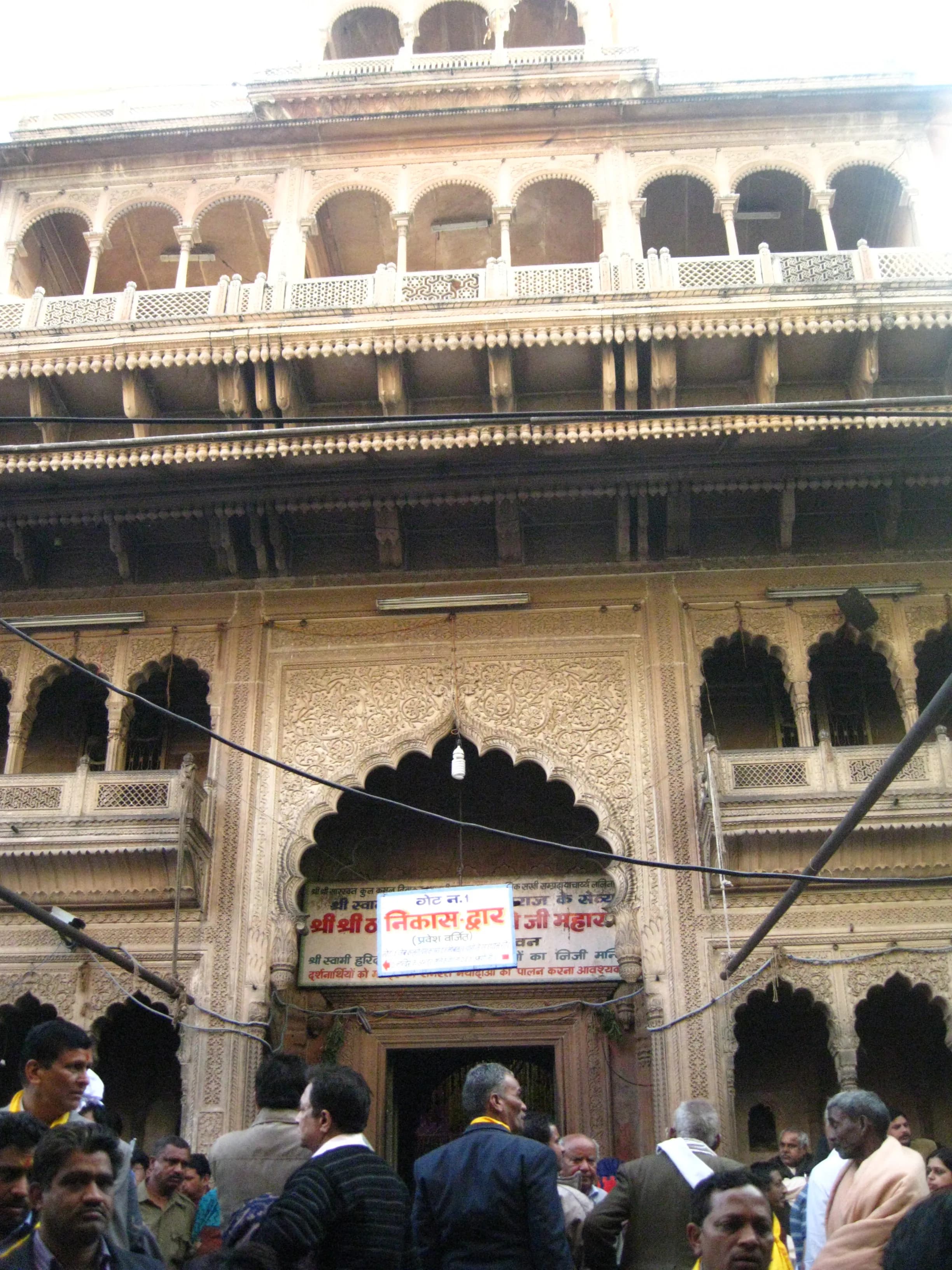
Featured
80% Documented
Banke Bihari Gali, Mathura, Vrindavan (281121), Uttar Pradesh, India, Uttar Pradesh
The air in Vrindavan hummed with a palpable devotion, a tangible energy that seemed to emanate from the very stones of the Banke Bihari Temple. Having explored the basalt-carved caves and intricately sculpted temples of Maharashtra, I arrived at this North Indian shrine with a keen eye for architectural nuances and a heart open to a different flavour of spirituality. The jostling crowds, the insistent chants, and the overwhelming fragrance of incense were a stark contrast to the quiet serenity I was accustomed to. The temple, nestled in the heart of Vrindavan, stands as a testament to the fervent devotion to Krishna, specifically his "Banke Bihari" form – the playfully mischievous deity who steals butter and hearts with equal ease. Unlike the grand, sprawling temple complexes I’ve seen in the South, Banke Bihari Temple is relatively compact, almost intimate. Its architecture reflects the Rajasthani style, a departure from the typical North Indian Nagara style I expected. The intricately carved sandstone facade, a warm ochre hue, is adorned with delicate latticework screens known as *jalis*. These screens not only serve as decorative elements but also allow glimpses of the deity within, creating an air of mystery and anticipation. Entering the temple felt like stepping into another world. The narrow passage leading to the inner sanctum was packed with devotees, their faces alight with devotion. The rhythmic clang of cymbals, the fervent chanting of "Radhe Radhe," and the occasional outburst of ecstatic singing created an atmosphere both chaotic and captivating. The jostling wasn't aggressive; it felt more like a collective surge of spiritual energy, everyone pushing forward towards the same divine source. Finally, I caught a glimpse of Banke Bihari. The deity, adorned in opulent silks and jewels, stood under a canopy of flowers, his flute held delicately in his hand. The image, though fleeting, was mesmerizing. The curtains that veil the deity are drawn frequently, a unique practice in this temple. Locals believe that gazing at Banke Bihari for too long can induce a trance-like state, and the curtains are drawn to break the spell. This practice, though unusual, added to the mystique and heightened the sense of anticipation. The temple's inner courtyard, though crowded, offered a brief respite from the intensity of the sanctum. Here, I observed the architectural details more closely. The pillars supporting the roof were intricately carved with floral motifs and scenes from Krishna's life, a testament to the skill of the artisans. The floor, worn smooth by centuries of footsteps, felt imbued with a sense of history and devotion. One striking difference I noted compared to Maharashtrian temples was the absence of elaborate *gopurams* or towering gateways. The focus here seemed to be entirely on the inner sanctum and the deity within. The architecture, while beautiful, served as a backdrop to the intense spiritual experience, rather than being the primary focus. Leaving the temple, I felt a sense of both exhilaration and exhaustion. The experience was overwhelming, a sensory overload of sights, sounds, and emotions. While the architectural style differed vastly from the caves and temples of my home state, the underlying current of devotion felt familiar. The Banke Bihari Temple, with its unique rituals and palpable energy, offered a glimpse into a different facet of Indian spirituality, a testament to the diverse and vibrant tapestry of faith that weaves through this land. It was a journey not just to a different state, but to a different dimension of devotion.
Temple
Rajput Period
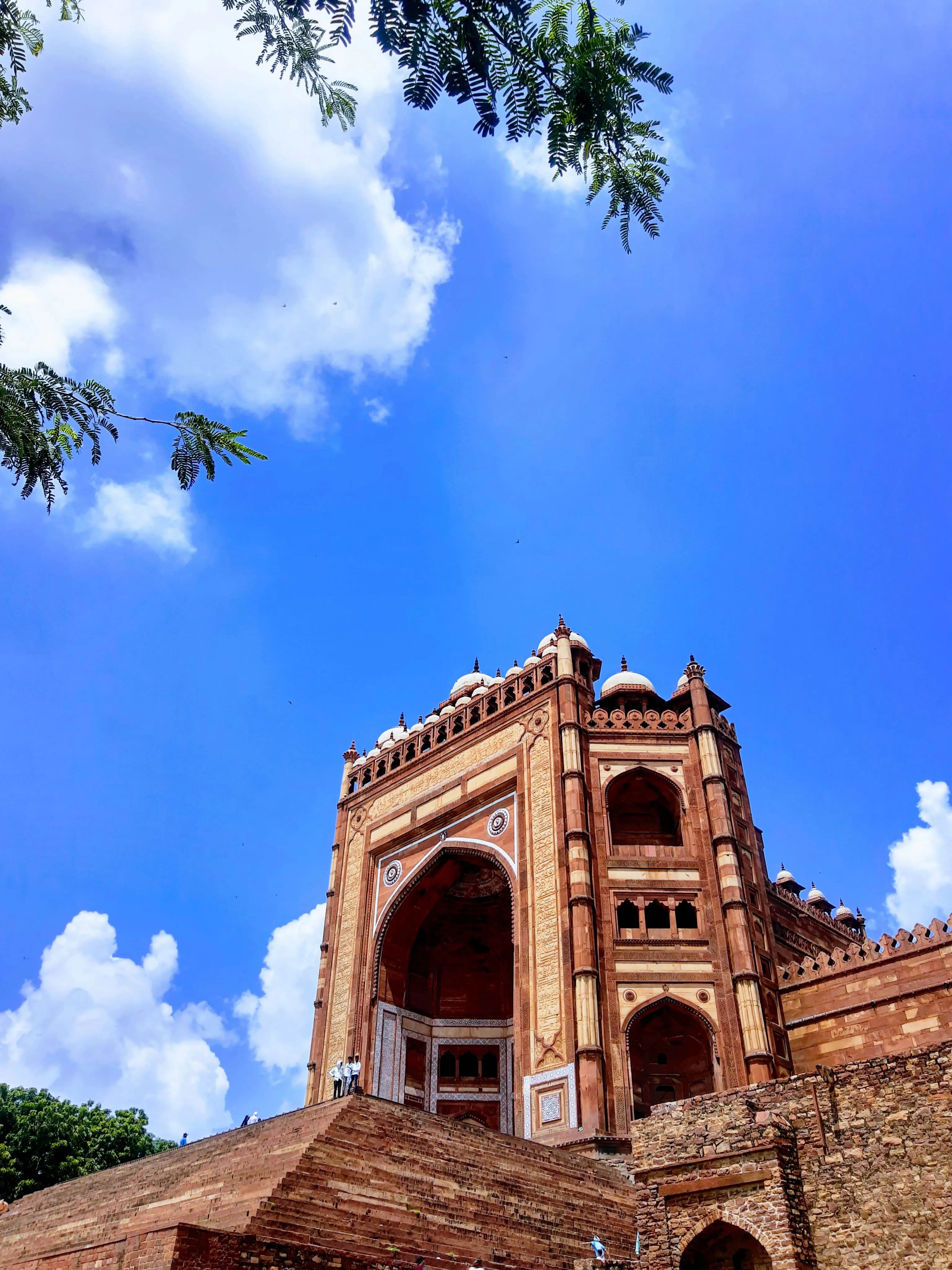
Featured
80% Documented
Buland Darwaza, Agra, Fatehpur Sikri (283110), Uttar Pradesh, India, Uttar Pradesh
The sheer scale of Buland Darwaza hits you long before you reach its imposing shadow. Emerging from the gentle slopes surrounding Fatehpur Sikri, this colossal gateway, a reddish-brown sentinel against the Uttar Pradesh sky, feels less like an entrance and more like a declaration. Having crisscrossed North India for years, documenting its architectural marvels, I can confidently say few structures possess the immediate, breathtaking grandeur of Akbar’s victory arch. My most recent visit to Fatehpur Sikri began, as it always does, with a sense of anticipation. The deserted city, a Mughal ghost town whispering stories of a glorious past, holds a particular fascination for me. But even after numerous visits, the Buland Darwaza still manages to evoke awe. Fifty-two meters high, it dwarfs everything around it, a testament to Mughal ambition and architectural prowess. The semi-circular steps leading up to the gateway already begin to prepare you for the sheer scale of what lies ahead. Passing through the towering archway, I ran my hand over the intricately carved sandstone. The red sandstone, sourced from the nearby quarries, glows with a warmth that belies its age. The intricate calligraphy, primarily verses from the Quran, adds another layer of artistry. These inscriptions, deeply etched into the stone, are not mere decorations; they are proclamations of faith, chronicles of victory, and testaments to the artistic sensibilities of the era. I spent a considerable amount of time deciphering the Persian inscriptions, a tangible link to the Mughal emperors who once walked these very grounds. The architectural style of Buland Darwaza is a fascinating blend of Persian and Indian influences. The towering arch, a characteristically Persian feature, is complemented by the chattris, small domed pavilions, which are distinctly Indian. This fusion of styles, so typical of Mughal architecture, is perhaps most perfectly realized in this magnificent gateway. The interplay of light and shadow on the carved surfaces creates a constantly shifting tapestry of textures, a visual feast for anyone with an appreciation for architectural detail. Looking down from the gateway offers a panoramic view of Fatehpur Sikri, a city frozen in time. The Jama Masjid, the palaces, the courtyards – all spread out below like a meticulously crafted miniature. It's easy to imagine the bustling activity that once filled these spaces, the courtiers, the soldiers, the merchants, all moving within the confines of Akbar’s magnificent capital. Standing there, I felt a palpable connection to history, a sense of being a small part of a larger narrative that stretches back centuries. One of the most striking features of the Buland Darwaza, and something that often goes unnoticed by casual observers, is the subtle shift in scale as you ascend. The lower portions of the gateway are proportionally larger, creating a sense of perspective and emphasizing the height. This clever architectural trick enhances the sense of grandeur and makes the gateway appear even taller than it actually is. It’s a testament to the ingenuity of the Mughal architects and their mastery of proportion and scale. As the sun began to set, casting long shadows across the deserted city, I took one last look at the Buland Darwaza. The setting sun bathed the sandstone in a warm, golden light, accentuating the intricate carvings and giving the gateway an almost ethereal glow. It was a fitting end to my visit, a moment of quiet contemplation in the presence of a truly magnificent structure. The Buland Darwaza is more than just a gateway; it's a symbol of Mughal power, a testament to architectural brilliance, and a timeless reminder of India’s rich and layered history. For anyone traveling through North India, it is an absolute must-see.
Gateway
Mughal Rajput Period

Featured
80% Documented
Chunar, Mirzapur, Chunar (231304), Uttar Pradesh, India, Uttar Pradesh
The wind whipping off the Ganges carried whispers of history as I climbed the ramparts of Chunar Fort, a sandstone behemoth perched strategically above the holy river. The sheer scale of the fortifications, rising from the rocky bluff, is immediately impressive. This isn't just a fort; it's a layered testament to centuries of power struggles, religious shifts, and architectural ingenuity, etched into the very stone. My journey began at the main gate, a formidable structure with intricate carvings that hinted at the fort’s Mughal past. The sandstone, bleached by the sun, still bore traces of its original vibrancy, with faded remnants of paint clinging to recessed carvings. The imposing gateway led into a labyrinthine complex of courtyards, palaces, and military structures, each whispering tales of bygone eras. One of the most striking features of Chunar Fort is its blend of architectural styles. The initial foundations, laid down in the pre-Islamic period, are evident in the robust, almost primal construction of the lower levels. Massive, irregularly shaped blocks of stone, fitted together with remarkable precision, speak to an era before standardized brickwork. Later additions, particularly those from the Mughal period, introduce a more refined aesthetic. Delicate jalis, intricate floral motifs, and the graceful arches of the Sonwa Mandap pavilion showcase the artistic sensibilities of the Mughal emperors who once held sway here. I spent a considerable amount of time exploring the Sonwa Mandap, drawn by its ethereal beauty. The pavilion, overlooking the Ganges, is supported by intricately carved pillars, each a masterpiece of stonework. The play of light and shadow through the jalis creates a mesmerizing effect, and I could almost imagine the Mughal royalty enjoying the cool river breeze from this vantage point. The fort's strategic importance is undeniable. From its elevated position, it commands panoramic views of the surrounding plains and the Ganges, a vital artery of trade and communication. It's no wonder that Chunar Fort was coveted by rulers across centuries, from the Mauryas and Guptas to Sher Shah Suri and the British East India Company. Standing on the ramparts, I could almost feel the weight of history pressing down, the echoes of battles fought and empires won and lost. Beyond the grand structures and strategic viewpoints, it was the smaller details that truly captivated me. A worn inscription on a wall, a faded fresco in a hidden chamber, the deep grooves worn into the stone steps by countless feet – these were the whispers of everyday life within the fort, the human stories that often get lost in the grand narratives of history. One particularly poignant moment was my visit to the dungeon. The oppressive darkness, the thick stone walls, and the chilling silence were a stark reminder of the fort's less glamorous past. It was a sobering experience, forcing me to confront the darker aspects of power and control that are often intertwined with historical monuments. My exploration of Chunar Fort wasn't just a sightseeing trip; it was a journey through time. It was a privilege to walk in the footsteps of emperors, soldiers, and commoners, to connect with the rich tapestry of human experience woven into the fabric of this magnificent structure. As I descended the winding path back towards the town, I carried with me not just photographs and memories, but a deeper understanding of the historical and cultural significance of this remarkable fort, a true jewel of Uttar Pradesh. The whispers of the Ganges, now carrying the sounds of the present, seemed to mingle with the echoes of the past, reminding me that history is not just something we read about in books; it's something we experience, something we feel, something that lives on in the stones of places like Chunar Fort.
Fort
Rajput Period

Featured
80% Documented
Ramnagar Fort, Ramnagar, Varanasi (221008), Uttar Pradesh, India, Uttar Pradesh
The air vibrates with a palpable energy. Not the frenetic energy of Varanasi’s bustling ghats, but something older, something rooted deeper. Here, nestled amidst the labyrinthine lanes a short boat ride from the main ghats, stands Durga Mandir, a 17th-century temple dedicated to the warrior goddess Durga. Its walls, a vibrant shade of ochre, rise against the sky, a beacon of power and devotion. My journey to Durga Mandir, another tick on my quest to experience every UNESCO site in India, began with a dawn boat ride. The Ganges, still shrouded in the morning mist, held a serene beauty, a stark contrast to the vibrant chaos that would soon erupt on its banks. As we approached Ramnagar, the temple's distinctive profile emerged, its multiple shikharas reaching towards the heavens. Stepping off the boat and onto the dusty lane leading to the temple, I was immediately struck by the sense of anticipation. The air buzzed with the low hum of chanting and the clang of bells. The temple, built on a high plinth, commanded attention. Its Nagara style architecture, typical of North Indian temples, is a feast for the eyes. The multi-tiered shikharas, adorned with intricate carvings, rise in a rhythmic crescendo, culminating in ornate finials. The ochre walls, though weathered by time and the elements, retain their vibrancy, a testament to the enduring faith of the devotees. A large rectangular pond, known as Durga Kund, flanks the temple. Local lore claims it was dug by the goddess herself and is connected to the nearby Ganges. The water, a murky green, reflects the temple’s imposing structure, creating a mesmerizing mirror image. Devotees circumambulate the kund, their prayers mingling with the chirping of birds and the distant sounds of the city. Entering the main sanctum, I was enveloped in a heady mix of incense, flowers, and the fervent energy of prayer. The dimly lit space, illuminated by flickering oil lamps, held an air of mystery. The idol of Goddess Durga, resplendent in red and gold, sits majestically on a lion, her multiple arms holding various weapons. The sheer power emanating from the deity is palpable, leaving an indelible impression on the visitor. While the main shrine is dedicated to Durga, the temple complex also houses smaller shrines dedicated to other deities, including Lord Hanuman and Lord Shiva. Each shrine, though smaller in scale, boasts the same intricate carvings and vibrant colours, showcasing the rich artistic traditions of the region. What struck me most about Durga Mandir wasn't just its architectural grandeur or the palpable devotion of its visitors. It was the seamless blend of history, mythology, and everyday life. Outside the temple walls, life continued at its usual pace. Vendors hawked their wares, children played in the dusty lanes, and cows ambled along, seemingly oblivious to the sacred space they shared. This juxtaposition of the sacred and the mundane, the ancient and the contemporary, is what makes Varanasi, and indeed India, so uniquely captivating. As I left Durga Mandir, the setting sun casting long shadows across the Ganges, I carried with me not just photographs and memories, but a deeper understanding of the enduring power of faith and the rich tapestry of Indian culture. This temple, a vibrant testament to devotion and artistry, is a must-see for anyone seeking to experience the true essence of Varanasi.
Temple
Maratha Period
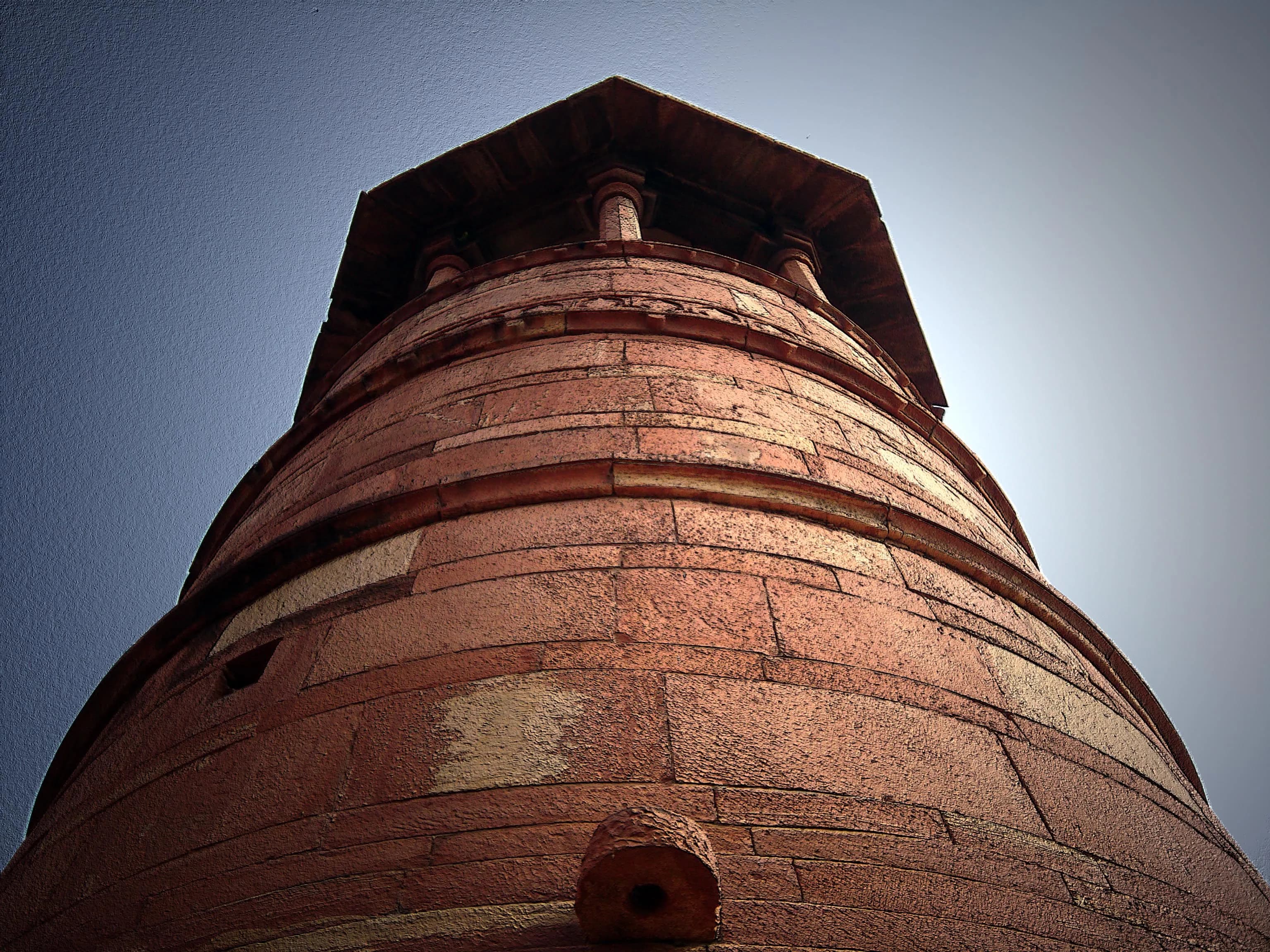
UNESCO
Featured
80% Documented
Fatehpur Sikri, Agra, Agra (283110), Uttar Pradesh, India, Uttar Pradesh
The sandstone shimmered under the late afternoon sun, a warm, almost ethereal glow bathing the deserted courtyards of Fatehpur Sikri. Having crisscrossed North India for years, exploring crumbling forts and bustling cities, I thought I was immune to the charms of another Mughal monument. I was wrong. Fatehpur Sikri, Akbar’s abandoned capital, whispered stories of a glorious past, a brief but brilliant chapter in Indian history. Stepping through the Buland Darwaza, the imposing victory gate, felt like stepping back in time. Its sheer scale is breathtaking, a 54-meter high testament to Akbar’s military prowess. The intricate carvings, a blend of Persian and Indian motifs, hinted at the cultural confluence that defined his reign. This wasn't just a fort; it was a city, meticulously planned and executed, a testament to a vision that, though short-lived, left an indelible mark. The Diwan-i-Aam, the hall of public audience, sprawled before me, its vastness punctuated by the raised platform where Akbar, the emperor, would address his subjects. I could almost picture the vibrant scene – the courtiers, the petitioners, the bustling activity of a thriving capital. The Diwan-i-Khas, the hall of private audience, was even more captivating. The central pillar, intricately carved and radiating outwards like the branches of a tree, is an architectural marvel. It was here that Akbar held discussions with scholars and representatives of different faiths, fostering the spirit of religious tolerance that characterized his rule. I wandered through the Panch Mahal, a five-storied pavilion, each level smaller than the one below, creating a pyramidal structure that offered stunning views of the surrounding plains. The intricate jalis, or perforated stone screens, allowed the breeze to flow through, a clever architectural solution to the scorching summer heat. These screens also served another purpose – they allowed the royal women to observe the court proceedings without being seen, a glimpse into the secluded world of the Mughal zenana. The Jodhabai’s Palace, with its Hindu architectural influences, stood in stark contrast to the predominantly Persian style of the other buildings. The carved brackets, reminiscent of Rajput architecture, and the absence of the characteristic Mughal arches, spoke volumes about Akbar’s respect for his Hindu wife and his efforts to integrate different cultural elements into his empire. One of the most poignant structures within the complex is Salim Chishti’s tomb. The white marble mausoleum, a masterpiece of intricate carving, is a place of reverence even today. I watched as devotees tied threads to the marble screens, whispering prayers, their faith echoing through the centuries. It was here, according to legend, that Akbar came to pray for an heir, and the birth of his son, Jahangir, cemented the saint’s reputation and led to the construction of this magnificent tomb. As the sun began to set, casting long shadows across the deserted courtyards, I felt a sense of melancholy wash over me. Fatehpur Sikri, once a bustling metropolis, now stands silent, a ghost of its former glory. The reasons for its abandonment remain shrouded in mystery, with theories ranging from water scarcity to Akbar’s shifting political priorities. Whatever the reason, the silence that now pervades this magnificent city only amplifies the whispers of its past, making the experience all the more profound. Leaving Fatehpur Sikri, I carried with me not just photographs and memories, but a deeper understanding of a pivotal period in Indian history, a time of cultural fusion, religious tolerance, and architectural brilliance.
Fort
Mughal Rajput Period
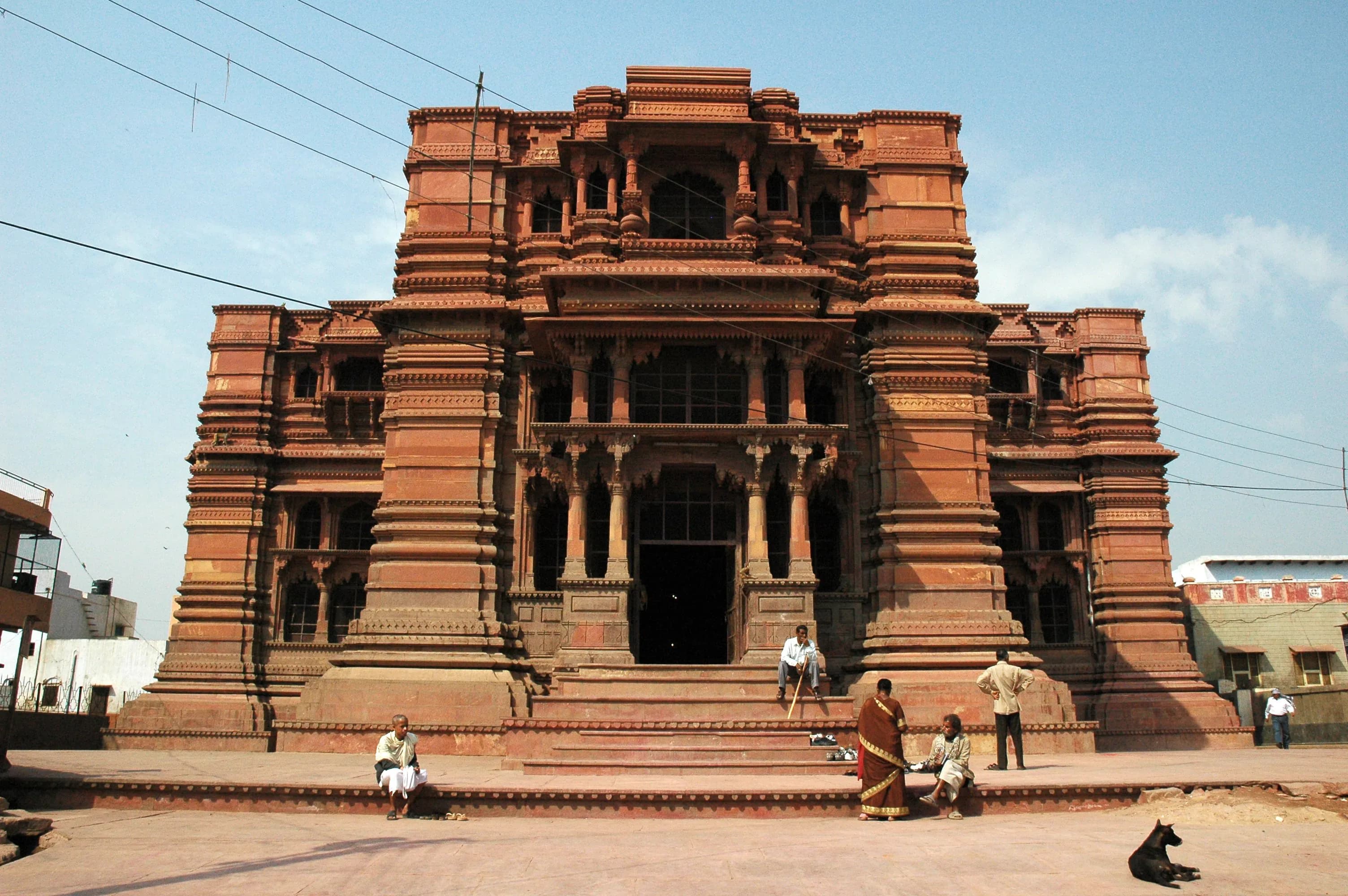
Featured
80% Documented
Near Loi Bazaar, Mathura, Vrindavan (281121), Uttar Pradesh, India, Uttar Pradesh
The red sandstone glowed, almost humming with a palpable energy under the late afternoon sun. Govind Dev Temple in Vrindavan, though no longer in its complete glory, still exudes a majestic aura that transported me back to a Vrindavan of centuries past. Having documented Gujarat's intricate temples for years, I was eager to experience the architectural nuances of this Braj marvel, and I wasn't disappointed. The first thing that struck me was the unique blend of architectural styles. While the temple’s core exhibits a distinctly Rajput influence, reminiscent of some of the grand structures I’ve seen in Rajasthan, the seven-storied structure (now sadly reduced to three) bore a striking resemblance to European architecture, particularly reminiscent of a cathedral. This fusion, I learned, was a result of the Mughal emperor Akbar's relatively tolerant religious policies during the late 16th century, a period that allowed for such cross-cultural architectural experimentation. Stepping inside the pillared hall, which now serves as the main prayer area, I was immediately drawn upwards. The soaring ceilings, even in their truncated state, evoked a sense of grandeur. The intricate carvings on the remaining pillars, depicting scenes from Krishna's life, were a testament to the skill of the artisans. Each carving told a story, each curve and line imbued with devotion. I spent a considerable amount of time tracing these narratives with my fingers, imagining the temple in its original seven-storied splendor. The absence of the upper four stories, destroyed by Aurangzeb in the 17th century, is a poignant reminder of the tumultuous history this temple has witnessed. Yet, the resilience of the structure and the continued devotion of the pilgrims who throng its courtyard speak volumes about its enduring spiritual significance. The air vibrated with chants and the fragrance of incense, creating an atmosphere thick with reverence. The temple complex is built around a rectangular courtyard, and while the main shrine is dedicated to Govind Dev (Krishna), smaller shrines dedicated to Radha and other deities dot the periphery. I observed the local devotees engaging in various rituals, their faces reflecting a deep connection to the divine. The rhythmic clang of bells and the melodic chanting of hymns further intensified the spiritual ambiance. The use of red sandstone, a material I'm intimately familiar with from Gujarat's architectural heritage, lends the temple a warm, earthy hue. However, unlike the intricate, almost lace-like carvings often seen in Gujarati temples, the carvings here are bolder, more pronounced, reflecting a different aesthetic sensibility. The interplay of light and shadow on the sandstone surfaces created a dynamic visual experience, constantly shifting throughout the day. One particular detail that captivated me was the remnants of the original staircase that once led to the upper floors. Though now inaccessible, the sheer scale and craftsmanship of the remaining steps hinted at the lost magnificence of the complete structure. I could almost visualize the devotees ascending those stairs, their hearts filled with anticipation, to reach the inner sanctum. Leaving the temple complex, I carried with me a profound sense of awe and a touch of melancholy. Awe at the architectural brilliance and spiritual energy that permeated the space, and melancholy for the lost grandeur of a structure that once touched the sky. Govind Dev Temple stands as a testament to the enduring power of faith and a poignant reminder of the fragility of our heritage. It is a site that deserves to be experienced, not just seen, and its story, etched in stone and whispered in chants, continues to resonate through the ages.
Temple
Rajput Period
.jpg&w=3840&q=75)
Featured
85% Documented
Barwasagar, Jhansi (284303), Uttar Pradesh, India, Uttar Pradesh
The sun, a molten orb in the Bundelkhandi sky, cast long shadows across the parched landscape as I approached the Jarai Ka Math temple near Barwasagar. Dust swirled around my jeep, settling on the scrubby vegetation that clung tenaciously to the rocky terrain. This wasn't a place you stumbled upon; it was a destination sought out, a whisper of ancient artistry hidden in the heart of India. The temple, dedicated to Lord Shiva, rises from a low, rocky outcrop, a testament to the architectural prowess of the Chandella dynasty. Its sandstone walls, once a vibrant ochre, are now weathered to a warm, honeyed hue, etched with the passage of time and the relentless touch of the elements. Unlike the grand, elaborately carved temples of Khajuraho, Jarai Ka Math exudes a quiet dignity, its beauty found in its elegant proportions and subtle ornamentation. Climbing the worn stone steps, I felt a palpable shift in atmosphere. The heat seemed to lessen, replaced by a sense of tranquility. The temple's compact mandapa, or porch, welcomed me with its intricately carved pillars. While not as profusely adorned as some of the more famous Chandella temples, the carvings here possessed a unique charm. Floral motifs intertwined with depictions of celestial beings, their forms softened by erosion, lending them an ethereal quality. I spent a considerable amount of time photographing these details, trying to capture the interplay of light and shadow that brought the carvings to life. The garbhagriha, the inner sanctum, was smaller than I anticipated, its doorway framed by an intricately carved architrave. Peering inside, I could just make out the lingam, the symbol of Shiva, bathed in the soft glow of the afternoon sun filtering through the doorway. The air within felt thick with centuries of prayers and devotion. What struck me most about Jarai Ka Math was its isolation. Unlike other, more popular heritage sites, there were no crowds, no hawkers, just the whispering wind and the distant calls of birds. This solitude amplified the sense of connection to the past. I could almost imagine the artisans who meticulously carved these stones centuries ago, their devotion imbued in every chisel mark. Circling the temple, I noticed a series of smaller shrines scattered around the main structure, some reduced to rubble, others still retaining vestiges of their former glory. These remnants hinted at a larger complex, a thriving religious center that had fallen victim to the ravages of time and neglect. I clambered over fallen stones, my camera capturing the fragmented beauty, each broken piece telling a silent story. The western side of the temple offered a panoramic view of the surrounding countryside. The landscape stretched out before me, a tapestry of fields, dotted with villages and framed by distant hills. It was a breathtaking vista, a reminder of the symbiotic relationship between the temple and its environment. The setting sun painted the sky in hues of orange and purple, casting a magical glow over the ancient stones. As I prepared to leave, I paused at the base of the temple, looking back at its weathered silhouette against the darkening sky. Jarai Ka Math wasn't just a collection of stones; it was a living testament to a rich cultural heritage, a place where the past whispered secrets to those who took the time to listen. My photographs, I hoped, would capture not just the physical beauty of the temple, but also the intangible sense of history and spirituality that permeated the air. It was a privilege to document this hidden gem, a responsibility to share its story with the world.
Temple
Gurjara-Pratihara Period
3D Scan
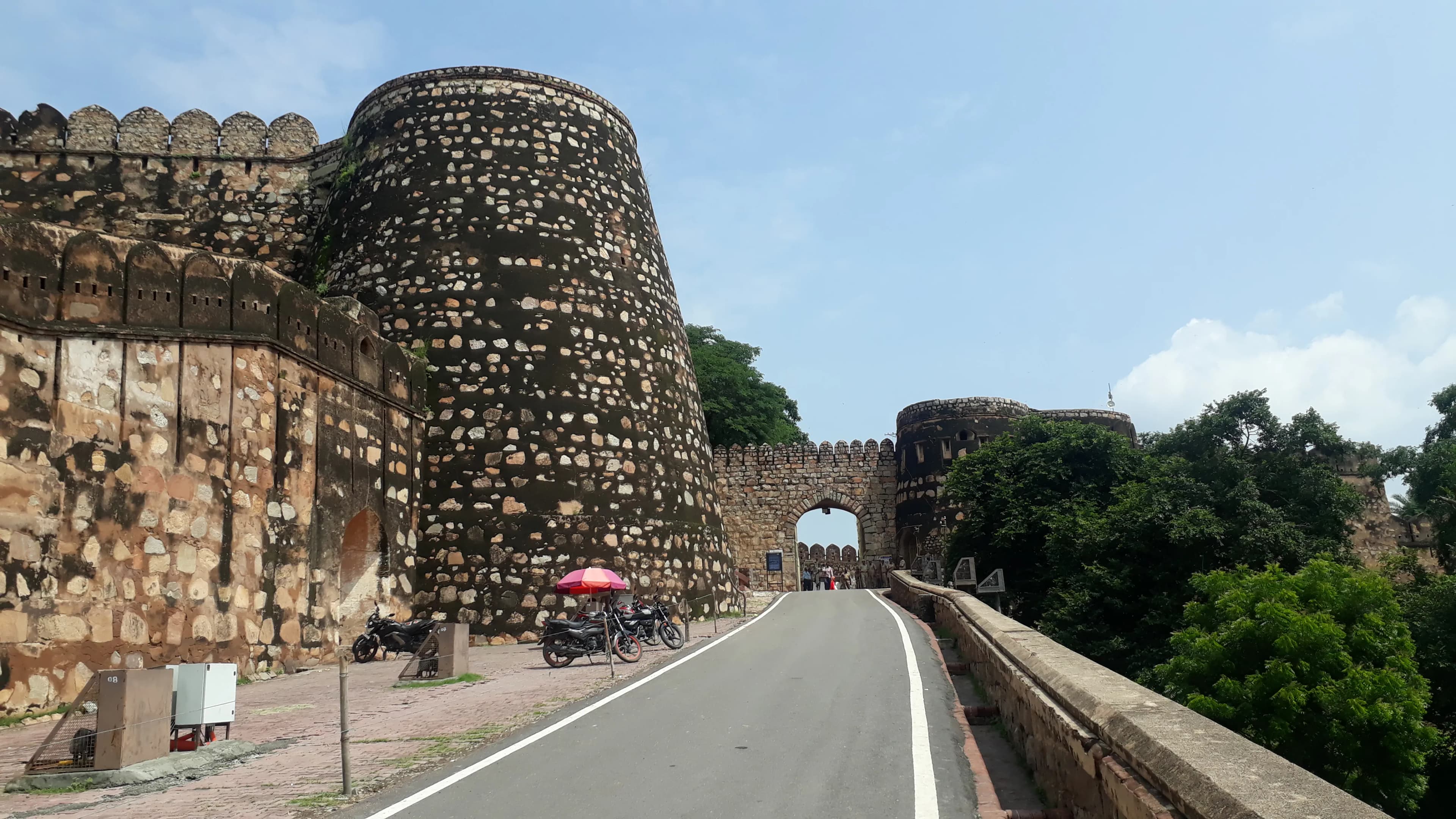
Featured
80% Documented
Fort Road, Jhansi, Jhansi (284001), Uttar Pradesh, India, Uttar Pradesh
The imposing sandstone ramparts of Jhansi Fort, rising dramatically from the Bundelkhand plains, seemed to hum with untold stories. Having explored countless caves and temples back home in Maharashtra, I’ve developed a keen eye for historical resonance, and this fort, even from a distance, vibrated with a palpable energy. The scorching Uttar Pradesh sun beat down as I approached the main gate, the very same gateway Rani Lakshmibai, the iconic warrior queen, is said to have charged through on horseback, her infant son strapped to her back. Entering through the Karak Bijli Toop (Lightning Cannon) gate, I was immediately struck by the fort's sheer scale. The walls, averaging 20 feet thick and rising to a height of 100 feet in places, enclosed a vast expanse. Unlike the basalt structures I’m accustomed to in Maharashtra, the reddish-brown sandstone gave the fort a distinct, almost earthy feel. The walls, though scarred by cannon fire and the ravages of time, held an undeniable strength, a testament to the fort's enduring resilience. My exploration began with the Ganesh Mandir, nestled within the fort's complex. The small, unassuming temple, dedicated to Lord Ganesha, offered a moment of quiet contemplation amidst the fort's martial history. The intricate carvings on the temple door, though weathered, spoke of a time of artistic flourishing within these walls. From there, I moved towards the Rani Mahal, the queen's palace. This was where the personal became intertwined with the historical. The palace, though now a museum, still echoed with the whispers of Rani Lakshmibai's life. The delicate murals depicting scenes of courtly life and nature, now faded but still visible, offered a glimpse into the queen's world, a world far removed from the battlefield. I paused in the courtyard, imagining the queen strategizing with her advisors, her spirit as fiery as the Bundelkhand sun. The panoramic view from the top of the fort was breathtaking. The sprawling city of Jhansi stretched out below, a tapestry of old and new. I could see the very path the queen took during her daring escape, a path etched not just in history books, but in the very landscape itself. It was here, looking out at the vastness, that the weight of history truly settled upon me. The fort’s architecture revealed a blend of influences. While predominantly exhibiting Hindu architectural styles, certain elements, like the strategically placed bastions and the use of cannons, hinted at the later Maratha influence. The Kadak Bijli cannon itself, a massive piece of artillery, stood as a silent witness to the fierce battles fought here during the 1857 uprising. The museum within the Rani Mahal housed a collection of artifacts from that era – swords, shields, and even some personal belongings of the queen. While these objects were fascinating in their own right, they also served as poignant reminders of the human cost of conflict. As I descended from the ramparts, leaving the fort behind, I couldn't shake the feeling that I had walked through a living testament to courage and resilience. Jhansi Fort is more than just stones and mortar; it’s a repository of stories, a symbol of resistance, and a powerful reminder of a queen who dared to defy an empire. It is a place where history isn't just read, it's felt. And for a history enthusiast like myself, that's the most rewarding experience of all.
Fort
Rajput Period
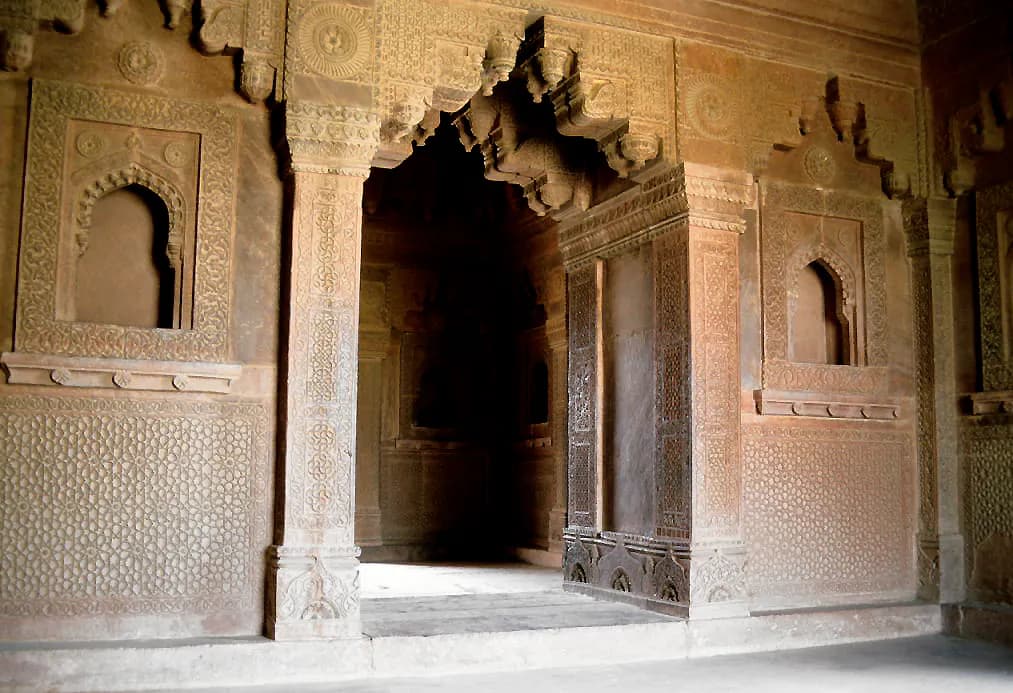
Featured
80% Documented
Fatehpur Sikri, Agra (283110), Uttar Pradesh, India, Uttar Pradesh
The sun, a molten orb in the Uttar Pradesh sky, cast long shadows across the sandstone expanse of Fatehpur Sikri. My gaze, however, was fixed on the Jodha Bai Palace, a structure that seemed to breathe with the whispers of Mughal history. Stepping through the imposing gateway, I felt a palpable shift, as if transported back to the 16th century. This wasn't just a palace; it was a symphony in stone, a testament to Akbar's vision and a reflection of Rajput architectural influences seamlessly blended with the prevailing Mughal style. The palace, enclosed within a high wall for privacy, exuded an air of quiet dignity. Unlike the overtly masculine architecture of some of the other structures in Fatehpur Sikri, Jodha Bai's palace felt distinctly feminine, a sanctuary within a city. The intricately carved brackets supporting the deep eaves, a hallmark of Gujarati architecture, were a striking departure from the more austere Islamic styles. These brackets, adorned with delicate floral motifs and mythical creatures, spoke volumes about the Rajput queen's heritage and the emperor's respect for it. I ran my hand over the warm sandstone walls, tracing the intricate jaali work. These perforated screens, so characteristic of Mughal architecture, allowed for ventilation while maintaining privacy, a clever solution to the harsh Indian summers. But here, in Jodha Bai's palace, the jaali work transcended mere functionality; it became an artistic expression, transforming sunlight into dappled patterns that danced across the inner chambers. I imagined the queen and her attendants, their silhouettes veiled by these intricate screens, observing the courtly life unfold below. The courtyard, the heart of the palace, was a haven of tranquility. A raised platform, perhaps once used for musical performances or storytelling, dominated the space. Surrounding it were smaller chambers, each with its own unique character. I peered into one, its walls adorned with frescoes, now faded with time, but still hinting at the vibrant colours that once graced them. Peacocks, lotus flowers, and geometric patterns – these fragments of the past offered a glimpse into the aesthetic sensibilities of the Mughal court. One of the most captivating features of the palace was the incorporation of Hindu architectural elements. The chhatris, small domed pavilions crowning the roof, were a clear nod to Rajput traditions. These chhatris, along with the ornate columns and the distinctive sloping eaves, created a unique architectural vocabulary, a harmonious blend of two distinct styles. It was a powerful symbol of Akbar's inclusive vision, a physical manifestation of his attempt to bridge cultural divides. As I moved through the palace, I noticed the clever use of water features. Small, strategically placed fountains and channels not only cooled the air but also added a soothing auditory dimension to the experience. The gentle gurgle of water, combined with the rustling of leaves in the nearby trees, created an atmosphere of serenity, a world away from the bustling city beyond the palace walls. Leaving the Jodha Bai Palace, I carried with me more than just photographs and memories. I carried a deeper understanding of the Mughal era, a period marked by both grandeur and cultural synthesis. The palace, in its quiet elegance, had spoken volumes about the lives of those who inhabited it, their aspirations, their beliefs, and their artistic sensibilities. It stood as a powerful reminder that architecture is not merely about bricks and mortar; it is about the stories they tell, the cultures they preserve, and the human connections they forge across time.
Palace
Rajput Period
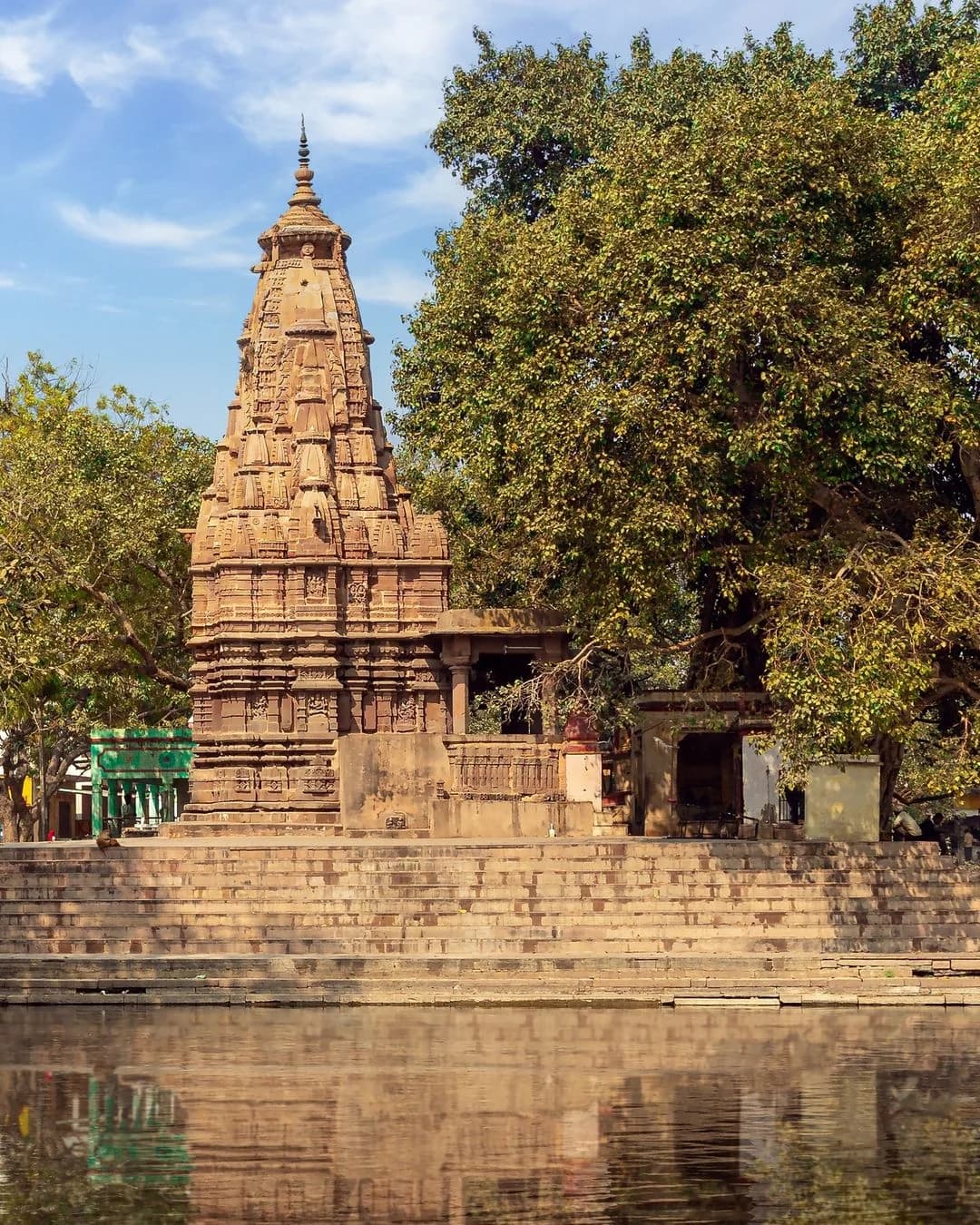
Featured
90% Documented
Kardameswar Mahadev Temple, Kandwa, Varanasi (221005), Uttar Pradesh, India, Uttar Pradesh
The Ganges, a swirling ribbon of ochre and silver, flowed just beyond the ghats, its rhythmic lapping a constant backdrop to the chants emanating from the Kardameswar Mahadev Temple. As someone who has spent years exploring the cave temples of Maharashtra, carved into the basalt heart of the Deccan plateau, stepping into this Varanasi temple was like entering a different world. Here, the architecture wasn't hewn from rock, but built brick by brick, rising towards the sky with a delicate intricacy that contrasted sharply with the rugged simplicity I was accustomed to. Located in the southern part of Varanasi, near the famed Kedar Ghat, the Kardameswar Mahadev Temple isn't as imposing as some of the city's grander structures. Yet, its unassuming exterior belies a rich history and a palpable spiritual energy. The temple is dedicated to Lord Shiva, in his form as Kardameswar, the "Lord of the Mud," a reference to the creation myth where Brahma emerged from the primordial waters. This connection to creation is reflected in the temple's atmosphere, a sense of quiet rebirth permeating the air. The entrance is through a modest arched gateway, leading into a small courtyard. The main shrine stands at the center, its shikhara, or tower, rising in a series of gradually receding tiers, culminating in a golden kalash, a pot-like finial. Unlike the pyramidal shikharas of South Indian temples or the curvilinear ones common in Odisha, this one displayed a distinct North Indian style, its profile gently curving outwards before tapering towards the top. The brickwork was intricate, with delicate carvings of floral motifs and divine figures adorning the surface. Traces of faded paint hinted at a more vibrant past, suggesting that the temple was once a riot of color. Inside the sanctum sanctorum, a lingam, the symbolic representation of Lord Shiva, stood bathed in the soft glow of oil lamps. The air was thick with the scent of incense and the murmur of prayers. Devotees offered flowers, milk, and water, their faces etched with devotion. I watched as a priest performed the aarti, the rhythmic waving of lamps accompanied by the chanting of mantras, the ancient syllables resonating within the small chamber. What struck me most about the Kardameswar Mahadev Temple wasn't its grandeur, but its intimacy. Unlike the cavernous halls of the Ellora caves or the sprawling complexes of Ajanta, this temple felt personal, a space for quiet contemplation and connection. The limited space, filled with the murmur of prayers and the scent of incense, fostered a sense of closeness, not just with the divine, but also with the other devotees. It was a shared experience, a collective immersion in faith. Stepping out of the main shrine, I noticed a smaller shrine dedicated to Goddess Parvati, Shiva's consort. This shrine, too, was built in the same North Indian style, its shikhara echoing the main temple's architecture. The presence of Parvati alongside Shiva underscored the concept of Ardhanarishvara, the composite form of Shiva and Parvati, representing the inseparable nature of the masculine and feminine principles in the cosmos. As I left the temple and walked towards the ghats, the sounds of the city slowly enveloped me. The chants faded into the background, replaced by the calls of vendors and the splash of oars in the Ganges. Yet, the sense of peace I felt within the temple lingered, a quiet reminder of the spiritual heart that pulsed beneath the vibrant chaos of Varanasi. The Kardameswar Mahadev Temple, though small in size, offered a profound glimpse into the rich tapestry of Hindu faith and the architectural heritage of North India, a stark yet fascinating contrast to the rock-cut wonders I knew so well from my home state of Maharashtra.
Temple
Maratha Period
3D Scan
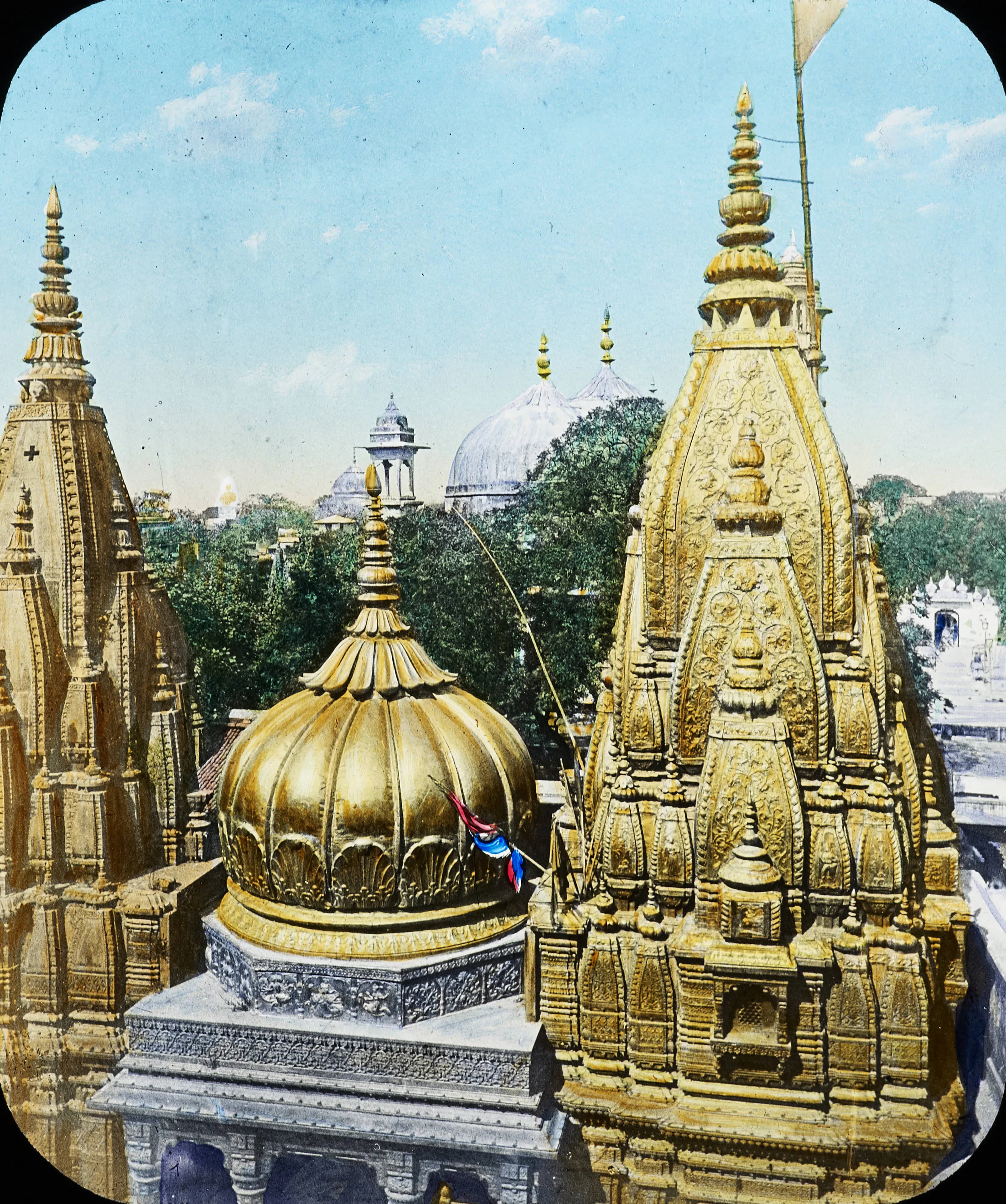
Featured
90% Documented
Vishwanath Gali, Varanasi, Varanasi (221001), Uttar Pradesh, India, Uttar Pradesh
The narrow lanes of Vishwanath Gali, teeming with pilgrims and the scent of incense, felt worlds away from the bustling Varanasi ghats. This labyrinthine alley, barely wide enough for two people to pass comfortably, funnels devotees towards a single, incandescent point: the Kashi Vishwanath Temple, a structure whose very stones seem to vibrate with centuries of devotion. Having photographed over 500 monuments across India, I thought I was prepared for the intensity of this experience, but the sheer spiritual charge of the place was overwhelming. Emerging from the alley's dimness, the temple’s gold-plated shikhara, or spire, blazed under the afternoon sun. It’s a breathtaking sight, a beacon of faith that draws the eye and the spirit. The intricate carvings covering the spire, depicting scenes from Hindu mythology, are a testament to the skill of the artisans who crafted them. Even from a distance, the sheer density of the ornamentation is striking, each figure and motif telling its own silent story. Security is understandably tight, and the process of entering the temple involves multiple checkpoints and a necessary relinquishing of cameras and phones. This enforced digital detox, while initially frustrating for a photographer, ultimately enhanced the experience. Stripped of the impulse to document, I was forced to simply *be* present, to absorb the atmosphere through my senses rather than my lens. Inside, the courtyard is a vibrant tapestry of activity. Priests chant ancient mantras, the air thick with the aroma of burning camphor and marigold garlands. Devotees, their faces alight with fervor, offer prayers and perform rituals. The walls, though worn smooth by the touch of countless hands, still bear traces of their intricate carvings. I noticed the subtle variations in the stonework, from the finely detailed sculptures of deities to the geometric patterns that adorned the pillars. The architecture, a blend of several styles reflecting the temple's complex history of destruction and reconstruction, speaks volumes about the enduring power of faith. The main sanctum, housing the Jyotirlinga, is the epicenter of this spiritual vortex. While photography is prohibited, the image of the shimmering lingam, bathed in the soft glow of oil lamps, is etched in my memory. The palpable energy of the space, amplified by the fervent chanting and the sheer density of devotion, is unlike anything I’ve experienced. It's a sensory overload, a cacophony of sound and scent and emotion that leaves you breathless. Leaving the main temple, I explored the smaller shrines dedicated to various deities within the complex. Each shrine, though smaller in scale, possessed its own unique character and atmosphere. I was particularly drawn to the Nandi shrine, where the faithful offered their respects to Shiva's sacred bull. The worn smoothness of the Nandi statue, polished by centuries of touch, spoke to the enduring power of devotion. Even after exiting the temple complex and regaining the relative calm of the ghats, the reverberations of the experience stayed with me. The Kashi Vishwanath Temple is more than just a monument; it's a living, breathing entity, pulsating with the heartbeats of millions of devotees. It's a place where faith transcends the physical realm, where the mundane dissolves into the sacred. As a heritage photographer, I’ve documented countless sites of historical and cultural significance, but few have touched me as profoundly as this. The Kashi Vishwanath Temple is a testament to the enduring power of faith, a place where the divine feels tangibly present. It's an experience that transcends the visual, etching itself onto the soul.
Temple
Maratha Period
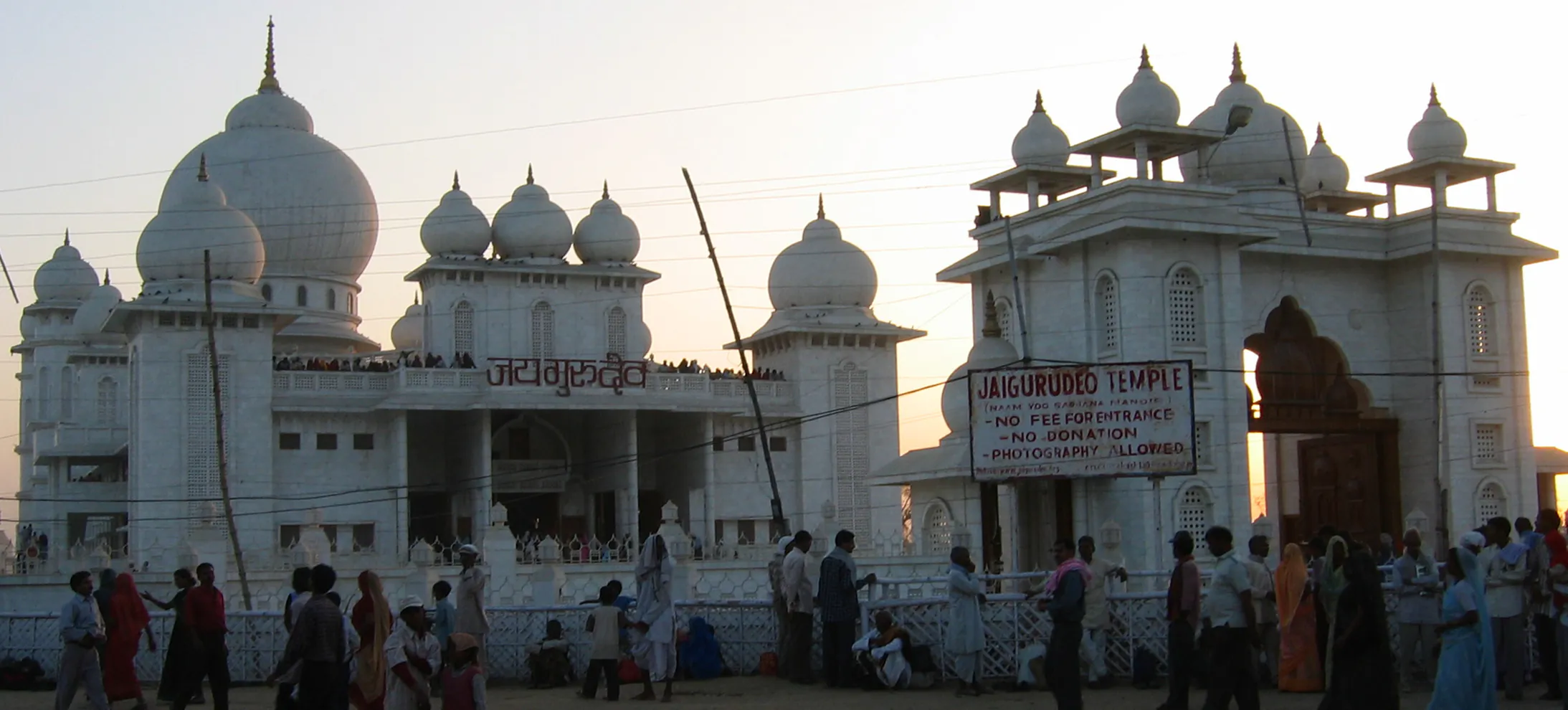
Featured
Deeg Marg, Mathura, Mathura (281001), Uttar Pradesh, India, Uttar Pradesh
The air in Mathura vibrates with a palpable energy, a hum of devotion that seems to emanate from the very stones of the Krishna Janmasthan Temple Complex. Standing within its precincts, I felt an immediate connection to the layers of history embedded within this sacred ground. The complex, a tapestry woven with threads of different eras, stands as a testament to the enduring power of faith and the cyclical nature of destruction and reconstruction. My gaze was immediately drawn to the imposing Keshav Dev Temple, its towering shikhara a beacon against the Mathura sky. While the current structure dates back to the 18th century, thanks to the patronage of the Jat ruler Suraj Mal, the palpable antiquity of the site whispers of much older incarnations. The very stones seemed to hold the memory of the original temple, believed to have been built by Vajranabha, Krishna’s great-grandson, a structure mentioned in the ancient scriptures. The repeated destructions and subsequent rebuildings, a recurring motif in Indian history, have imbued the site with a unique resonance, a sense of resilience in the face of adversity. The architecture of the Keshav Dev Temple showcases a blend of styles, reflecting the various influences that have shaped it over centuries. The intricate carvings adorning the walls, depicting scenes from Krishna’s life, are a testament to the skill of the artisans. I noticed the distinctive use of red sandstone, a material common in the region, which lends the temple a warm, earthy hue. The interplay of light and shadow on the carved surfaces created a dynamic visual experience, enhancing the narrative power of the sculptures. While some sections displayed the robust features of Rajput architecture, others hinted at the Mughal influence that permeated the region during certain periods. Moving through the complex, I entered the Garbha Griha, the sanctum sanctorum, where the deity of Keshav Dev is enshrined. The atmosphere within was charged with devotion, the air thick with the scent of incense and the murmur of prayers. The dimly lit space, illuminated by flickering oil lamps, fostered a sense of profound reverence. I observed the devotees, their faces etched with faith, offering prayers and performing rituals that have likely been practiced for generations. Adjacent to the Keshav Dev Temple lies the smaller, yet equally significant, Bhagavata Bhavan. This structure, built around an ancient prison cell believed to be the very birthplace of Krishna, holds a special significance for pilgrims. The low-ceilinged, claustrophobic space, a stark contrast to the grandeur of the Keshav Dev Temple, evokes a sense of intimacy and raw emotion. The very thought of Lord Krishna being born in such humble surroundings adds another layer to the narrative of his divine leela, his earthly play. The Idgah mosque, situated within the complex, adds another layer of complexity to the site's historical narrative. Its presence serves as a tangible reminder of the Mughal period and the religious tensions that have, at times, marked the region's history. The juxtaposition of the mosque and the temple within the same complex creates a unique spatial dynamic, a physical manifestation of the interwoven narratives that shape India's cultural landscape. Leaving the Krishna Janmasthan Temple Complex, I carried with me not just images of intricate carvings and soaring shikharas, but a deeper understanding of the complex interplay of faith, history, and architecture. The site stands as a powerful symbol of continuity and resilience, a living testament to the enduring legacy of Lord Krishna and the unwavering devotion he inspires. It is a place where the past whispers to the present, offering a glimpse into the rich tapestry of Indian history and spirituality.
Temple
Gupta Period

Featured
95% Documented
Kusum Sarovar, Govardhan (281502), Mathura, Uttar Pradesh, India, Uttar Pradesh
The air, thick with the scent of incense and marigold garlands, vibrated with a low hum of chanting as I descended the worn sandstone steps leading to Kusum Sarovar. This wasn’t just another monument on my North Indian itinerary; it was a palpable breath of history, nestled in the heart of Braj, near Govardhan Hill. Having explored countless ancient sites across the region, I thought I was immune to being awestruck, but Kusum Sarovar, with its serene beauty and spiritual weight, proved me wrong. The sarovar, or sacred pond, is rectangular, its still, dark water reflecting the surrounding architecture like a mirror. The banks are lined with intricately carved chhatris, small pavilions with delicate pillars and domed roofs, each a miniature masterpiece of Mughal-influenced Rajput architecture. I noticed the recurring motif of blossoming lotuses carved into the stone, a symbol of purity and rebirth, fitting for a place so steeped in religious significance. Unlike many historical sites that have succumbed to neglect, Kusum Sarovar is remarkably well-maintained. The sandstone, though weathered by centuries of sun and rain, retains its warm, honeyed hue, and the carvings, while softened by time, are still crisp and detailed. I spent a good hour just walking the perimeter, absorbing the details. The chhatris, I learned from a local priest, were built in the 18th century by the Jat rulers, commemorating various Radha-Krishna legends associated with this very spot. He pointed out one particular chhatri, slightly larger and more ornate than the others, said to mark the spot where Radha and her gopis would meet Krishna. Looking out at the placid water, I could almost imagine the scene unfolding centuries ago – the vibrant colours of their silks, the tinkling of their anklets, the air filled with laughter and the melody of flutes. The steps leading down to the water are broad and inviting, worn smooth by countless pilgrims who have come to bathe in the sacred waters. I watched as families performed rituals, offering flowers and prayers, their faces etched with devotion. The atmosphere was charged with a quiet reverence, a stark contrast to the bustling marketplaces I’d encountered elsewhere in Mathura. It was a reminder that this wasn’t just a tourist attraction; it was a living, breathing testament to faith. Beyond the immediate vicinity of the sarovar, the landscape unfolds into a panorama of green fields and the looming silhouette of Govardhan Hill. This proximity to nature adds another layer to the site’s charm. The gentle breeze rustling through the trees, the chirping of birds, the distant lowing of cattle – all contribute to a sense of tranquility that is hard to find in the urban chaos of Delhi. One architectural detail that particularly caught my eye was the use of jalis, intricately carved lattice screens, in some of the chhatris. These screens not only provided shade and ventilation but also created a play of light and shadow, adding a dynamic element to the otherwise static structures. I peered through one of the jalis, framing the sarovar and the distant hill in a perfect, naturally occurring picture frame. It was a moment of pure visual poetry. As the sun began to dip below the horizon, casting long shadows across the sarovar, I found a quiet corner to sit and reflect. Kusum Sarovar is more than just a beautiful monument; it's a portal to another time, a place where history, mythology, and spirituality intertwine. It’s a reminder of the enduring power of faith and the beauty that can be found in the simplest of things – the reflection of the sky on still water, the warmth of ancient stone, the whisper of a prayer carried on the wind. It's a place I won't soon forget, and one I highly recommend to anyone seeking a deeper connection with India's rich cultural heritage.
Stepwell
Rajput Period
3D Scan
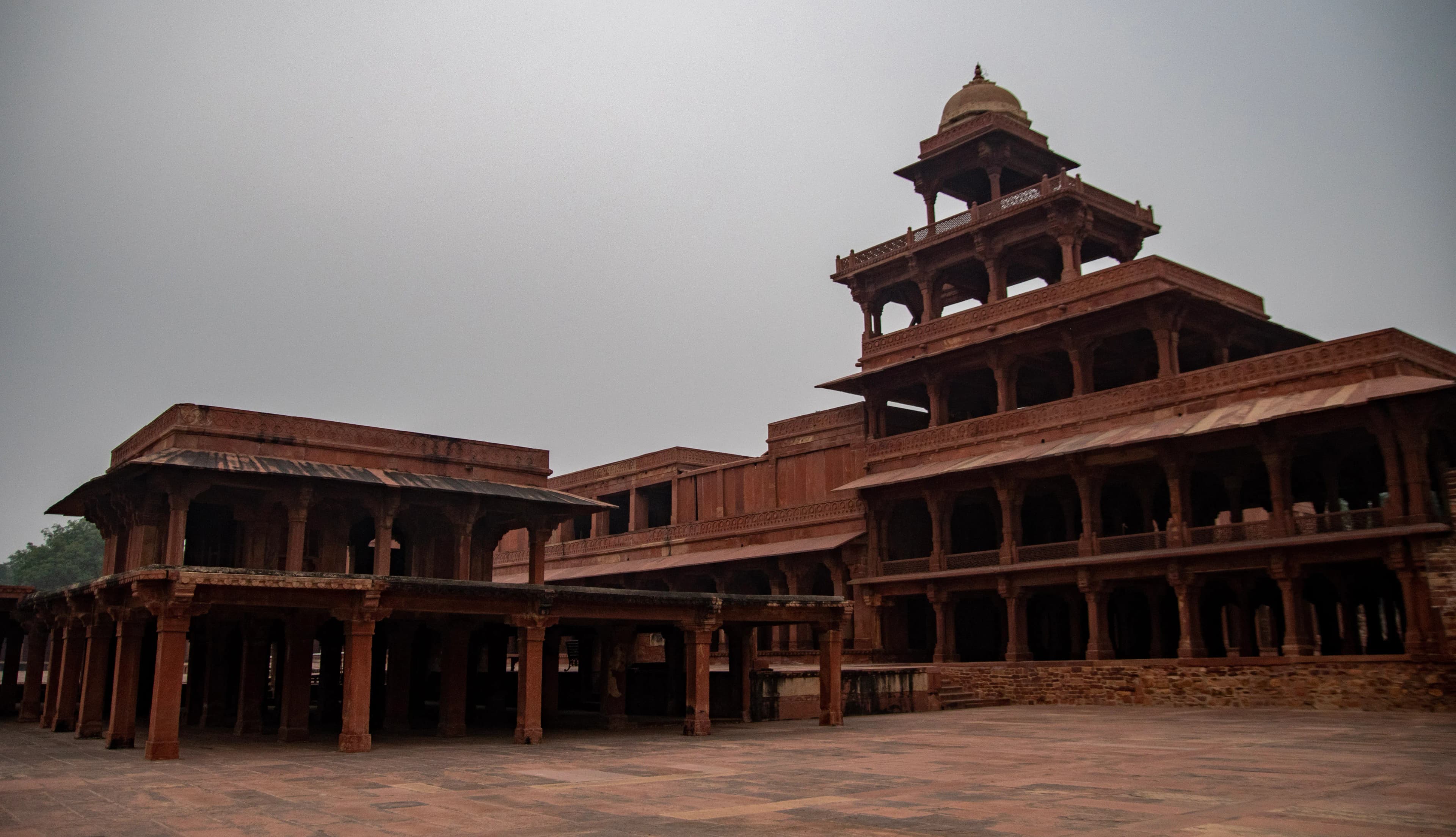
Featured
80% Documented
Panch Mahal, Fatehpur Sikri, Agra (283110), Uttar Pradesh, India, Uttar Pradesh
The wind whispers stories through the pierced screens of Panch Mahal, a structure that rises like a delicately carved sandcastle against the Fatehpur Sikri skyline. As I adjusted my camera, framing the pyramidal tiers against the vast Uttar Pradesh sky, I felt a palpable connection to the Mughal era. This wasn't just a building; it was a breathing testament to Akbar's vision, a blend of Hindu and Persian architectural styles that spoke volumes about the cultural confluence of the time. The ground floor, a sprawling open pavilion supported by 84 pillars, once served as a cool respite from the summer heat. I could almost envision the royal women gathered here, their laughter echoing through the now silent spaces. The pillars, each uniquely carved with intricate floral and geometric patterns, captivated my lens. The play of light and shadow through the jaalis, the intricately carved stone lattices, created a mesmerizing tapestry that shifted with the sun's journey across the sky. I spent a considerable amount of time documenting these details, trying to capture the essence of the craftsmanship that had stood the test of centuries. Ascending the levels, the structure shrinks in size, each tier offering a more exclusive and panoramic view of the surrounding city. The second story, supported by fewer pillars, felt more intimate, perhaps a space for smaller gatherings. The third, fourth, and fifth levels, each progressively smaller, culminate in a single chhatri, a domed kiosk, on the topmost tier. This final level, once Akbar's private retreat, offered an unparalleled vista of his magnificent creation. Standing there, I felt a sense of awe, imagining the emperor contemplating his empire from this vantage point. The red sandstone, bathed in the golden hues of the late afternoon sun, radiated warmth. The subtle variations in the stone's color, from a rich ochre to a pale rose, added depth and texture to my photographs. I focused on capturing the interplay of light and shadow, highlighting the intricate carvings and the graceful arches. The pillars, while seemingly uniform from a distance, revealed their unique personalities upon closer inspection. Some bore delicate floral motifs, others geometric patterns, and still others a combination of both, a testament to the artisans' skill and creativity. One aspect that particularly intrigued me was the absence of walls on the lower levels. This open design, unusual for a palace, fostered a sense of connection with the surrounding environment. I could see how the structure, while grand, was also designed for comfort and practicality, allowing for the free flow of air and offering breathtaking views. The jaalis, while providing privacy, also allowed for glimpses of the outside world, blurring the lines between inside and out. My experience at Panch Mahal transcended mere documentation. It was a journey through time, a conversation with the past. As I packed my equipment, the setting sun casting long shadows across the courtyard, I felt a deep sense of gratitude for the opportunity to witness and preserve the legacy of this magnificent structure. The photographs I captured are not just images; they are fragments of history, frozen moments in time, waiting to share their stories with the world. They are a testament to the enduring beauty of Mughal architecture and a reminder of the rich cultural heritage that India holds within its embrace.
Palace
Mughal Rajput Period
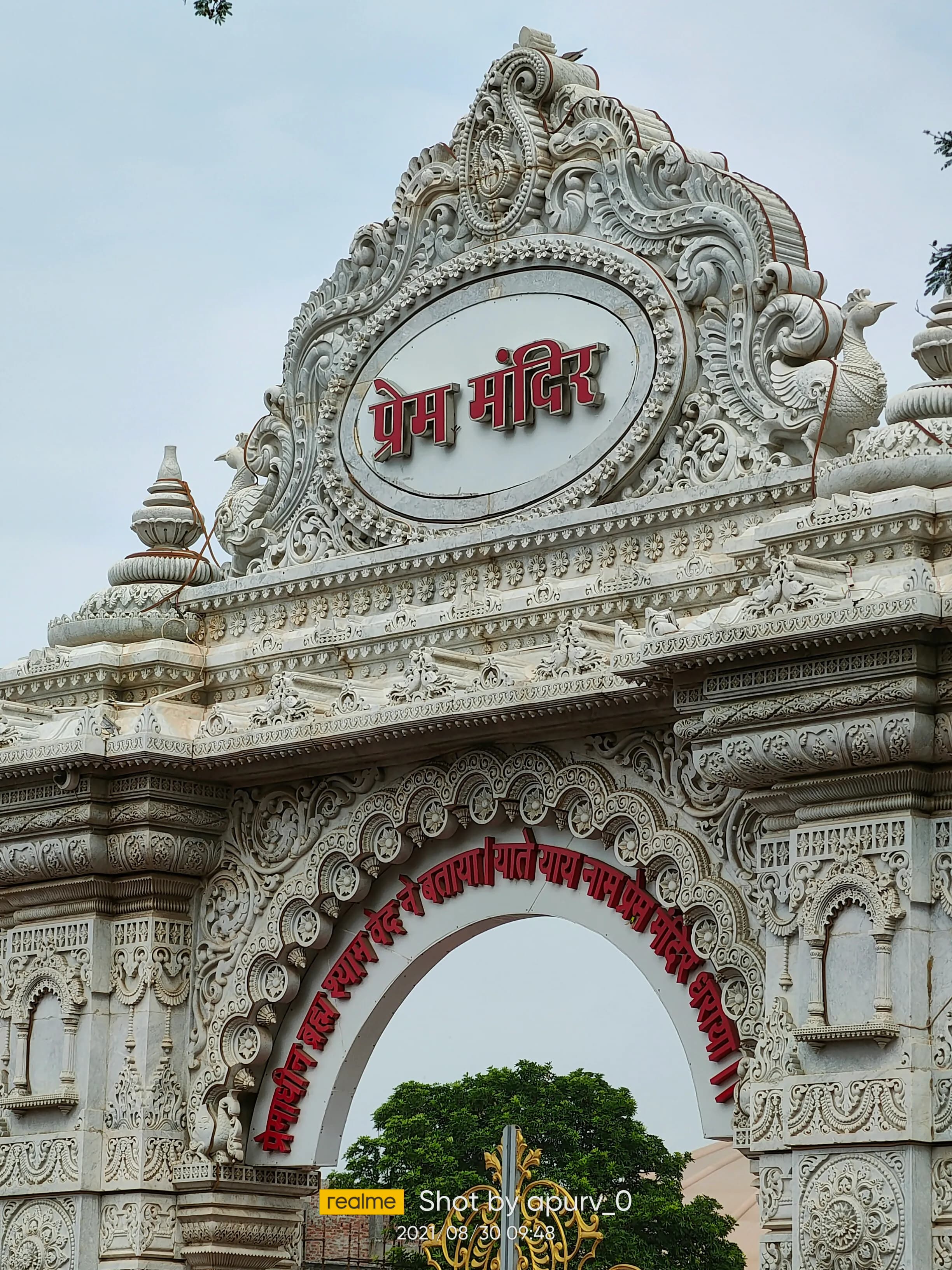
Featured
80% Documented
Parikrama Marg, Mathura, Vrindavan (281121), Uttar Pradesh, India, Uttar Pradesh
The air hummed with a palpable devotion, a tangible energy that enveloped me as I stepped onto the pristine marble expanse of Prem Mandir in Vrindavan. Having explored countless temples across North India, I thought I was immune to the sheer scale and grandeur of religious architecture, but Prem Mandir stopped me in my tracks. Bathed in the warm glow of the late afternoon sun, the temple, a relatively recent addition to Vrindavan's spiritual landscape, shimmered like a celestial palace descended to earth. The sheer scale is breathtaking. Towering white spires, intricately carved with depictions of Krishna's leelas, reach towards the sky, creating a skyline unlike any other in this holy city. Unlike the older, sandstone structures that characterize much of Vrindavan, Prem Mandir’s Italian marble construction gives it a unique, almost ethereal quality. The stone, imported from Italy, is polished to a high sheen, reflecting the sunlight and creating a dazzling spectacle. As I walked through the main gate, I was struck by the meticulous detailing. Every inch of the temple, from the towering shikharas to the delicate floral motifs adorning the walls, speaks of painstaking craftsmanship. The main temple structure is built on a raised platform, accessed by a broad flight of stairs. Circumambulating the main shrine, I noticed the intricate bas-relief panels depicting scenes from Krishna's life. These aren't mere carvings; they are narratives etched in stone, each panel telling a story with remarkable expressiveness. I paused at a depiction of the Rasa Lila, the divine dance of Krishna with the gopis, captivated by the fluidity of the figures and the sense of joyous movement captured in the static medium. One of the most striking features of Prem Mandir is the Govardhan Hill replica situated behind the main temple. This miniature mountain, crafted with impressive realism, is a testament to the devotion that fueled the temple's creation. Waterfalls cascade down its slopes, feeding a small lake at its base, creating a serene oasis within the bustling temple complex. Walking around the hill, I felt transported to the pastoral landscape of Braj, the region where Krishna is said to have spent his youth. As dusk settled, the temple underwent a magical transformation. Thousands of tiny lights embedded in the marble facade flickered to life, illuminating the intricate carvings and casting a warm, inviting glow over the entire complex. The light show, synchronized with devotional music, is a spectacle in itself, drawing gasps of admiration from the assembled devotees. The narrative of Krishna's life, projected onto the temple walls, added another layer to the experience, bringing the stories etched in stone to vibrant life. What truly sets Prem Mandir apart, however, is not just its architectural magnificence or the dazzling light show, but the palpable sense of serenity that pervades the atmosphere. Despite the crowds, a sense of peacefulness permeates the air. I observed families seated on the marble floors, lost in prayer, and groups of pilgrims chanting hymns with quiet devotion. The temple, despite its grandeur, feels remarkably intimate, a space where individuals can connect with their faith in their own way. Leaving Prem Mandir, I carried with me not just the memory of its architectural splendor, but also a renewed appreciation for the power of faith and devotion. It’s a testament to human ingenuity and artistic skill, a place where spirituality and artistry converge to create an experience that is both awe-inspiring and deeply moving. For anyone journeying through North India's spiritual heartland, Prem Mandir is an essential stop, a place to witness the enduring power of belief manifested in marble and light.
Temple
Contemporary Period
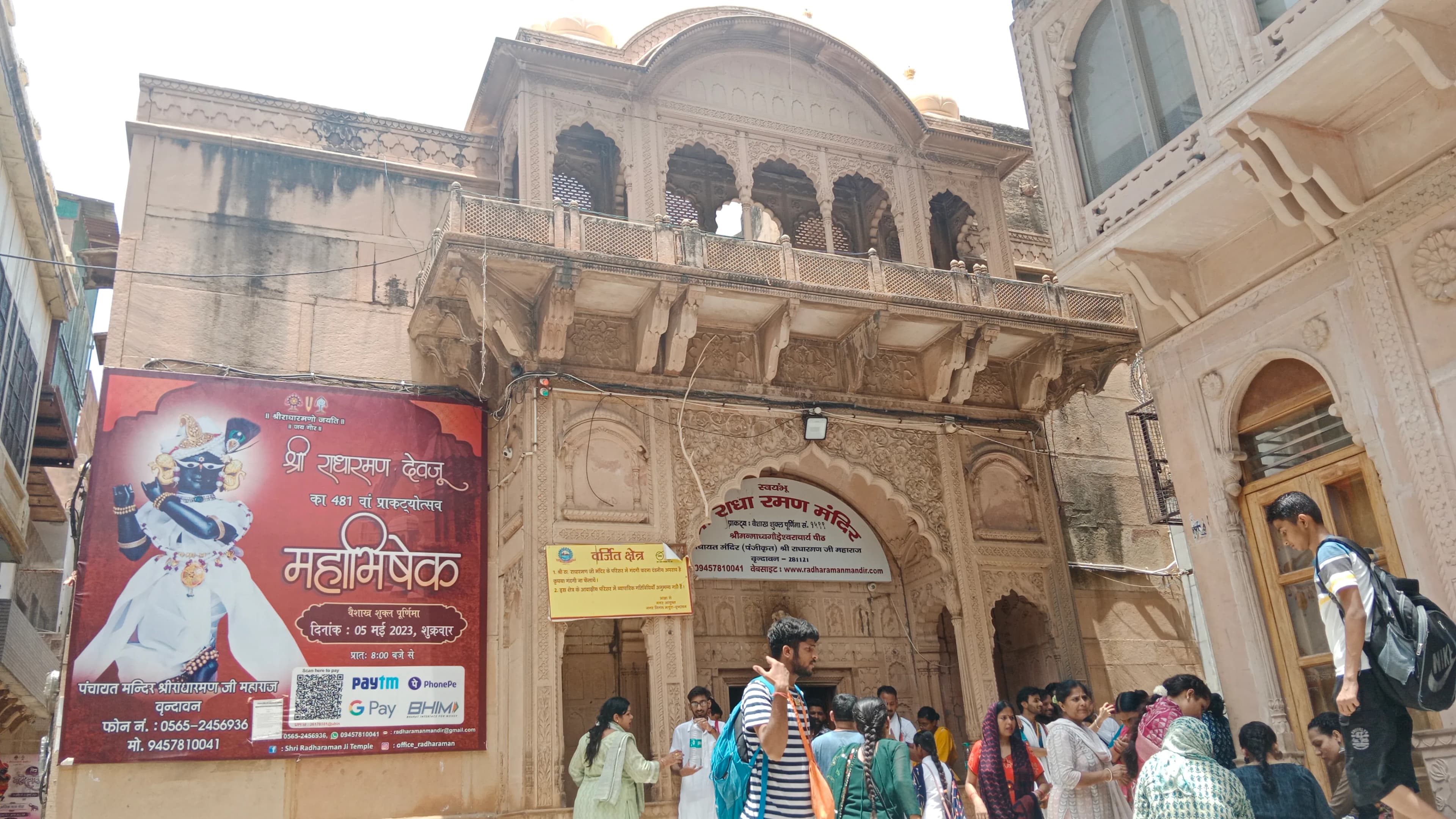
Featured
80% Documented
Radha Raman Marg, Mathura, Vrindavan (281121), Uttar Pradesh, India, Uttar Pradesh
The midday sun cast long shadows across the courtyard of the Radha Raman Temple in Vrindavan, dappling the sandstone floor with an intricate dance of light and shade. The air, thick with the scent of incense and marigold garlands, hummed with a quiet devotion. I stood there, camera in hand, captivated by the temple’s unassuming elegance. Unlike some of the grander, more opulent temples I’ve documented across Madhya Pradesh, the Radha Raman Temple possesses a subtle charm, a quiet power that draws you in. Built in 1542, the temple is dedicated to Radha Raman, a form of Krishna. Its architecture reflects a blend of Mughal and Rajput influences, a testament to the syncretic nature of art and faith in this region. The main shrine, crowned with a distinctive shikhara, is relatively small, almost intimate. Its sandstone facade is intricately carved with floral motifs, geometric patterns, and depictions of divine figures. The carvings, though weathered by time, retain a remarkable sharpness, a testament to the skill of the artisans who crafted them centuries ago. I spent hours circling the temple, my lens focusing on the intricate details. The latticework screens, or jalis, particularly fascinated me. They allowed glimpses of the inner sanctum while maintaining a sense of sacred seclusion. The play of light filtering through these screens created ethereal patterns on the inner walls, adding another layer of visual richness to the space. I experimented with different angles, trying to capture the interplay of light and shadow, hoping to convey the temple's spiritual aura through my photographs. One of the most striking features of the Radha Raman Temple is its lack of an idol of Radha. Legend has it that Krishna himself manifested as Radha Raman, a self-complete form embodying both divine energies. Instead of a traditional idol, a shaligram shila, a black fossilized ammonite considered sacred to Vishnu, represents the deity. This unique aspect adds to the temple's mystique and makes it a significant pilgrimage site for Vaishnavas. As I moved through the temple complex, I observed the devotees. Their quiet reverence, their murmured prayers, and the gentle clanging of bells created a palpable sense of devotion. I witnessed elderly women circumambulating the shrine, their faces etched with deep faith, young couples seeking blessings, and families sharing prasad. These moments of human connection, interwoven with the temple's architectural beauty, formed the heart of my photographic narrative. The temple kitchen, a bustling hub of activity, offered another fascinating glimpse into the temple's daily life. Here, volunteers prepared vast quantities of prasad, the sacred food offered to the deity and later distributed to the devotees. The aroma of simmering lentils, fragrant rice, and sweetmeats filled the air, adding a sensory dimension to my experience. I captured images of the cooks, their hands moving with practiced ease, their faces reflecting the dedication and love they poured into their service. Beyond the main shrine, the temple complex houses several smaller shrines dedicated to other deities. Each shrine, though smaller in scale, displayed the same meticulous attention to detail and artistic craftsmanship. I was particularly drawn to a small, secluded courtyard where a Tulsi plant, sacred to Vishnu, was carefully tended. The quiet serenity of this space offered a welcome respite from the bustling activity of the main temple. As the day drew to a close, I found myself back in the main courtyard, watching the evening aarti ceremony. The chanting of hymns, the flickering lamps, and the fragrance of incense created a mesmerizing atmosphere. I raised my camera one last time, capturing the scene in all its spiritual grandeur. Leaving the Radha Raman Temple, I felt a deep sense of gratitude. It was not just a photographic assignment; it was a journey into the heart of faith, art, and history. The temple's quiet elegance, its intricate carvings, and the palpable devotion of its devotees had left an indelible mark on my soul, a testament to the enduring power of sacred spaces.
Temple
Rajput Period

Featured
80% Documented
Shreeji Nagar, Mathura, Vrindavan (281121), Uttar Pradesh, India, Uttar Pradesh
The scent of sandalwood hung heavy in the air, a fragrant welcome to the Radha Vallabh Haveli in Mathura. Having explored the basalt-carved caves and intricate temples of Maharashtra extensively, I was curious to see how the architectural narrative shifted in this Braj Bhoomi landmark. The haveli, dedicated to the Radha-Vallabh sect of Vaishnavism, didn't disappoint. It whispered stories of devotion, artistry, and a bygone era of opulent patronage. Unlike the monolithic structures I was accustomed to, the haveli unfolded like a labyrinth. Courtyards, interconnected chambers, and narrow passageways created a sense of intimate discovery. The red sandstone, a stark contrast to the dark hues of Maharashtra's basalt, glowed warmly under the afternoon sun. Intricate carvings adorned every surface – floral motifs, depictions of Krishna’s leelas, and geometric patterns, each narrating a fragment of the sect's rich mythology. It felt as though the very stones were singing hymns to Radha and Krishna. The main courtyard, the heart of the haveli, was particularly captivating. A raised platform, once used for religious discourses and performances, dominated the space. I could almost hear the echoes of devotional music and the rhythmic clapping of devotees lost in spiritual fervor. The surrounding walls, adorned with frescoes depicting scenes from the Bhagavata Purana, were faded yet retained a captivating vibrancy. The colours, predominantly blues, greens, and ochres, spoke of a time when artistry was an integral part of religious expression. Climbing the narrow, winding staircases, I reached the upper levels, which offered a panoramic view of the bustling city of Mathura. From this vantage point, the haveli seemed like an oasis of tranquility amidst the urban chaos. The intricate jalis, or lattice screens, allowed for ventilation while maintaining privacy, a testament to the architectural ingenuity of the time. Peering through these screens, I observed the daily life of the city unfolding below – a vibrant tapestry of sounds, colours, and movement. One of the most striking features of the haveli was its integration with nature. Small, enclosed gardens, or baghs, punctuated the structure, offering pockets of serenity. These spaces, with their flowering plants and trickling fountains, provided a refreshing contrast to the enclosed spaces and served as a reminder of the divine presence in the natural world. I noticed how the architecture seamlessly blended indoor and outdoor spaces, creating a harmonious environment. While exploring the haveli, I encountered several priests and devotees who shared anecdotes and insights into the history and significance of the site. Their narratives added another layer of understanding, enriching my experience beyond the purely visual. Learning about the daily rituals, the festivals celebrated, and the stories passed down through generations, I felt a deeper connection to the spiritual heart of the haveli. The Radha Vallabh Haveli is more than just a historical structure; it's a living testament to a vibrant faith and a rich artistic tradition. It's a place where architecture transcends its functional purpose and becomes a medium for storytelling, a canvas for devotion, and a portal to a bygone era. As I left the haveli, the scent of sandalwood still clinging to my clothes, I carried with me not just images of intricate carvings and vibrant frescoes, but also a profound sense of the enduring power of faith and the beauty of human expression. It served as a powerful reminder that even after exploring countless caves and temples, there are always new architectural narratives waiting to be discovered, each with its unique story to tell.
Haveli
Rajput Period
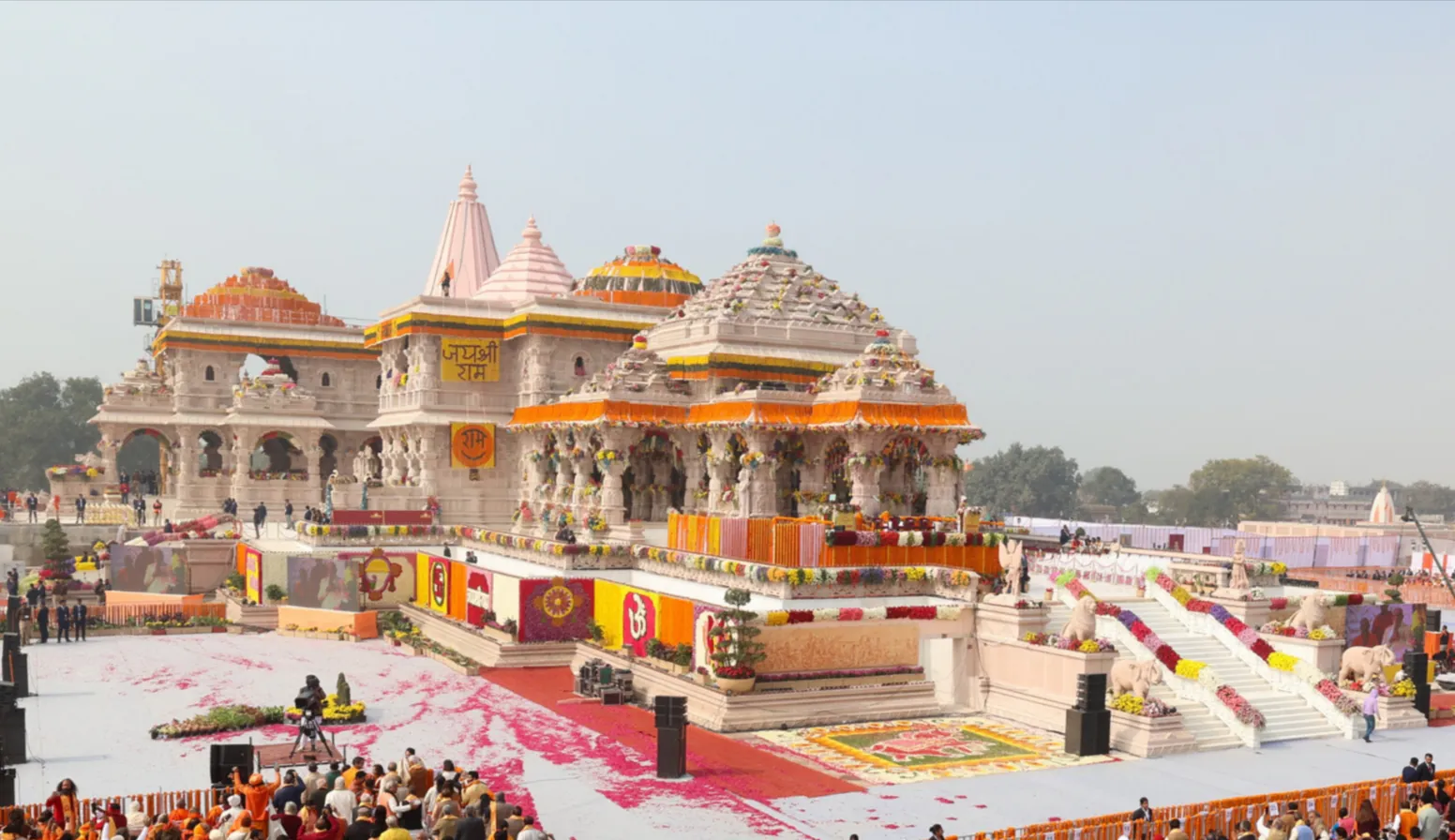
Featured
85% Documented
Ram Janmabhoomi, Ayodhya (224123), Uttar Pradesh, India, Uttar Pradesh
The dust of centuries seemed to settle as I stepped onto the hallowed ground of the Ram Janmabhoomi in Ayodhya. After years of traversing India's UNESCO sites, this one felt particularly resonant, a place where history, faith, and national identity intertwine in a complex tapestry. The newly constructed Ram Mandir, gleaming white under the Uttar Pradesh sun, is an imposing structure, its scale dwarfing the surrounding buildings. It’s a powerful statement, a testament to enduring belief. The architecture is a breathtaking blend of traditional Nagara style and contemporary engineering. Intricate carvings adorn every pillar, every archway, depicting scenes from the Ramayana, each a narrative in stone. The sheer volume of detailed carvings is astounding; I spent hours just absorbing the artistry, noticing new details with every glance. The creamy white marble, sourced from Rajasthan, shimmers, creating an ethereal glow, especially as the sun begins its descent. The main shikhara, soaring towards the heavens, is a marvel of engineering and a beacon of faith visible from miles around. The atmosphere within the temple complex is palpable. A sense of reverence hangs heavy in the air, punctuated by the chanting of hymns and the rustling of silk sarees. Devotees from all walks of life, their faces etched with devotion, queue patiently for darshan, a glimpse of the deity within the sanctum sanctorum. Witnessing this collective expression of faith was deeply moving, a reminder of the power of belief to unite and inspire. One aspect that struck me was the meticulous organization despite the sheer volume of visitors. The security is tight but unobtrusive, allowing for a smooth flow of devotees. The temple complex itself is designed to accommodate large crowds, with spacious courtyards and designated areas for prayer and reflection. Even the surrounding areas have been revamped, with wider roads and improved infrastructure, making access to the temple significantly easier. Beyond the grandeur of the temple itself, the entire city of Ayodhya seems to hum with a renewed energy. The streets are bustling with activity, shops overflowing with religious paraphernalia and local delicacies. The air is thick with the aroma of incense and the sounds of devotional music. It's evident that the Ram Mandir has not only become a spiritual center but also a catalyst for economic growth and development in the region. However, the weight of history is inescapable. The site's contested past is a silent presence, a reminder of the delicate balance between faith and politics. While the new temple signifies a new chapter, the echoes of the past linger, prompting reflection on the complexities of India's socio-political landscape. Conversations with locals revealed a mix of emotions – joy, pride, and a cautious hope for a peaceful future. As I left Ayodhya, the image of the Ram Mandir, bathed in the soft glow of the setting sun, remained etched in my mind. It's more than just a temple; it's a symbol, a story, a testament to the enduring power of faith and the complexities of Indian history. Having visited every UNESCO site in India, I can say with certainty that the Ram Mandir, while not yet on the list, holds a unique significance, a place where spirituality, history, and national identity converge. It's a place that stays with you long after you've left, prompting reflection and a deeper understanding of India's rich and multifaceted cultural heritage.
Temple
Contemporary Period
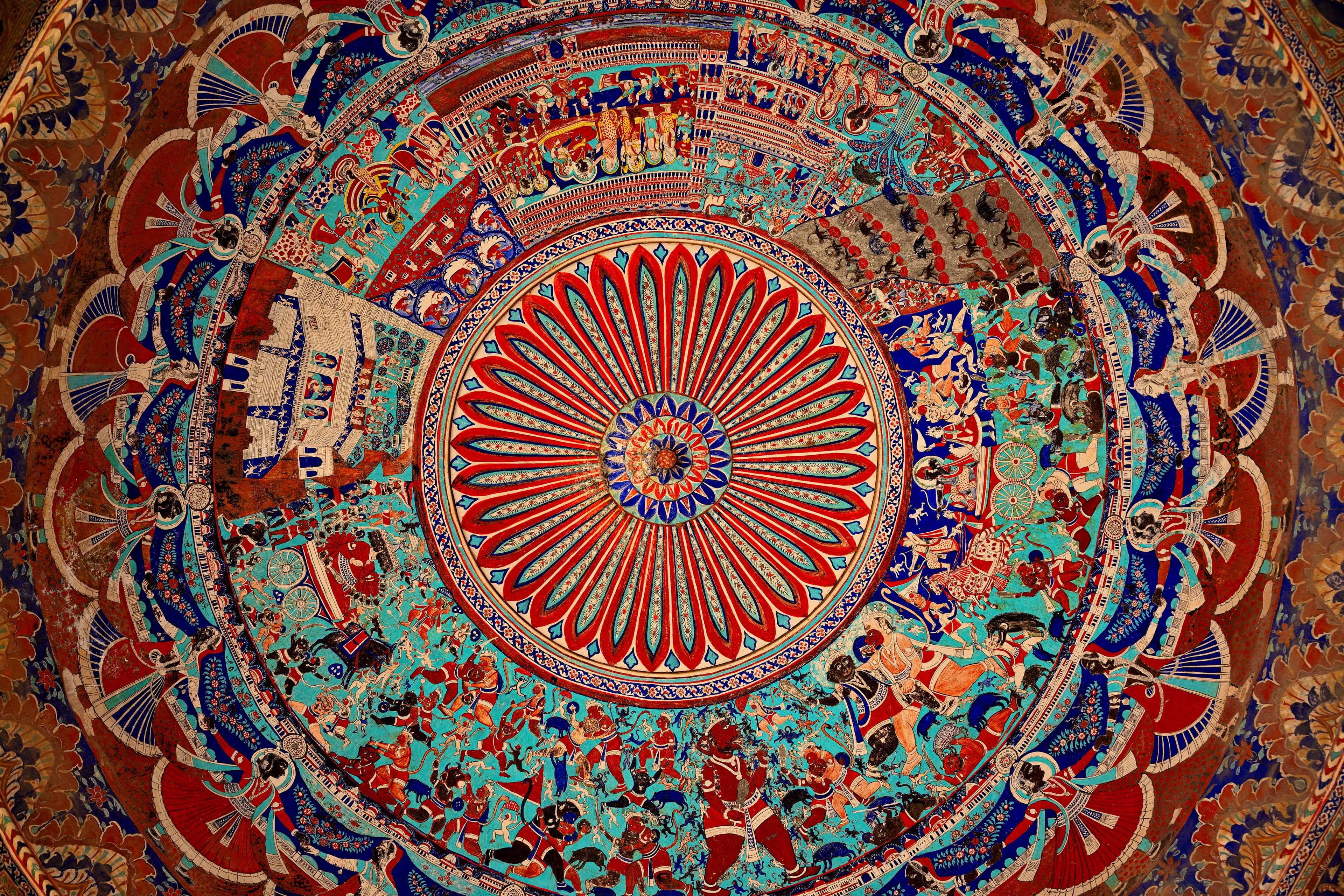
Featured
Gol Pada, Mathura (281001), Uttar Pradesh, India, Uttar Pradesh
The midday sun beat down on Mathura, casting long shadows across the narrow lanes as I finally stood before the imposing wooden doors of Seth Ram Gopal Haveli. A palpable sense of history hung in the air, a stark contrast to the bustling marketplace just a stone's throw away. This wasn't just another haveli; it was a whisper of a bygone era, a testament to the opulent lifestyle of Mathura's affluent merchant class. Pushing open the heavy doors, I stepped into a cool, dimly lit courtyard. The transition was immediate, from the chaotic energy of the streets to an almost monastic stillness. The haveli embraced me, its intricate carvings and aged brickwork whispering stories of generations past. My eyes were immediately drawn upwards to the five-story structure, a magnificent display of traditional Braj architecture. Each level, supported by elaborately carved wooden pillars, seemed to lean in slightly, as if in confidential conversation with its neighbour. The courtyard, the heart of the haveli, was paved with worn flagstones, a testament to countless footsteps that had traversed this space over centuries. A small, neglected tulsi plant occupied a corner, a poignant reminder of the family’s daily rituals. The walls surrounding the courtyard were adorned with frescoes, their colours faded yet still vibrant enough to depict scenes from Krishna’s life, a common motif in this region so deeply connected to the deity. I noticed the intricate jali work, delicate screens of carved stone allowing for both ventilation and privacy, a hallmark of Mughal architectural influence. Ascending the wide, wooden staircase, the scent of aged wood filled my nostrils. Each step creaked under my weight, a rhythmic soundtrack to my exploration. The upper floors revealed a labyrinth of interconnected rooms, each with its own unique character. Some rooms boasted ornate ceilings with intricate floral patterns, while others showcased remnants of painted murals, now fragmented and ghostly. I peered into a room that likely served as a kitchen, its walls blackened by years of cooking fires, imagining the aromas of traditional Braj cuisine that must have once permeated these spaces. One of the most striking features of the haveli was its collection of exquisitely carved wooden balconies. Leaning against the intricately patterned railing of one such balcony, I overlooked the bustling street below. It was easy to imagine the wealthy Seth, perhaps Ram Gopal himself, observing the daily life of the city from this very vantage point. The rhythmic clang of a blacksmith’s hammer, the melodic calls of street vendors, the laughter of children playing – these sounds, though centuries removed from the haveli’s heyday, still echoed in the spaces between the carved wood. While the haveli undoubtedly bore the marks of time and neglect, its grandeur was undeniable. Peeling paint, crumbling plaster, and the silence of empty rooms only added to its melancholic charm. It wasn't merely a structure; it was a living archive, a tangible link to a rich cultural heritage. I could almost hear the rustle of silk sarees, the murmur of conversations, and the joyous strains of celebratory music within its walls. As I descended the creaking staircase and stepped back into the vibrant chaos of Mathura’s streets, I carried with me a profound sense of connection to the city’s past. Seth Ram Gopal Haveli wasn't just a tourist attraction; it was a time capsule, offering a glimpse into a world of exquisite craftsmanship, opulent lifestyles, and a deep-rooted connection to tradition. It’s a place that deserves not just a visit, but a moment of quiet contemplation, a chance to listen to the stories whispered by its ancient walls.
Haveli
British Colonial Period
.jpg&w=3840&q=75)
Featured
100% Documented
Vidur Kuti Road, Bijnor, Daranagarganj (246731), Uttar Pradesh, India, Uttar Pradesh
The dust swirled around my ankles as I walked the narrow lane leading to Vidur Kutir in Bijnor, Uttar Pradesh. The air, thick with the scent of incense and marigold garlands, hummed with a quiet devotion that felt palpable. This wasn't a grand, imposing temple complex. Instead, Vidur Kutir presented itself with an understated dignity, a humble structure whispering tales of ancient wisdom and Mahabharata lore. The temple, dedicated to Maharishi Vidur, the prime minister of Hastinapur and the embodiment of dharma and justice, sits nestled amidst a bustling, modern town. This juxtaposition, the ancient whispering amidst the contemporary clamor, struck me immediately. It felt as though time itself had folded, allowing a glimpse into a bygone era. The main shrine is relatively small, built primarily from red sandstone. Unlike the ornate carvings that adorn many North Indian temples, Vidur Kutir’s architecture leans towards simplicity. The walls are largely plain, punctuated by a few intricately carved panels depicting scenes from the Mahabharata, particularly those involving Vidur. I spent a considerable amount of time studying these panels, fascinated by the narrative they unfolded. The weathered stone, softened by centuries of sun and rain, seemed to hold the stories within its very grain. Inside the sanctum sanctorum, a simple murti of Maharishi Vidur resides. The atmosphere within the garbhagriha was charged with a quiet reverence. Devotees offered prayers and whispered their woes, seeking solace and guidance, much like they might have sought counsel from Vidur himself centuries ago. I observed the rituals, the flickering diyas casting dancing shadows on the walls, and felt a connection to the unbroken thread of faith that has permeated this space for generations. Beyond the main shrine, the temple complex houses a small museum. Here, fragments of the past are preserved – ancient pottery shards, terracotta figurines, and remnants of what archaeologists believe were once part of a larger settlement. These artifacts, though fragmented, offered a tangible link to the history of the site, reinforcing the belief that this wasn't merely a place of worship, but a place where life had thrived centuries ago. One of the most captivating aspects of Vidur Kutir was the presence of the ancient Banyan tree. Its sprawling branches, heavy with age, created a natural canopy over a portion of the complex. Local lore claims that this very tree provided shelter to the Pandavas during their exile. Whether true or not, the tree’s presence added another layer of mystique to the site. Sitting beneath its shade, I could almost imagine the whispers of the Pandavas, their hopes and anxieties echoing through the leaves. My lens captured the textures of the aged stone, the vibrant colours of the offerings, the serene expressions of the devotees, and the imposing presence of the Banyan tree. But beyond the photographs, I carried with me the intangible essence of Vidur Kutir – the sense of history, the weight of tradition, and the quiet power of faith. It's a place where the past and the present coexist, a place where stories are etched not just in stone, but in the very air you breathe. Vidur Kutir isn't just a temple; it's a living testament to the enduring power of dharma and the timeless wisdom of the Mahabharata. It’s a place that whispers stories to those who are willing to listen, and I, for one, was captivated by its quiet eloquence.
Archaeological Site
British Colonial Period
3D Scan
Related Collections
Discover more heritage sites with these related collections
Explore More Heritage
Explore our research archive. Each site includes historical context, architectural analysis, construction techniques, and preservation status. Perfect for academic research and heritage studies.